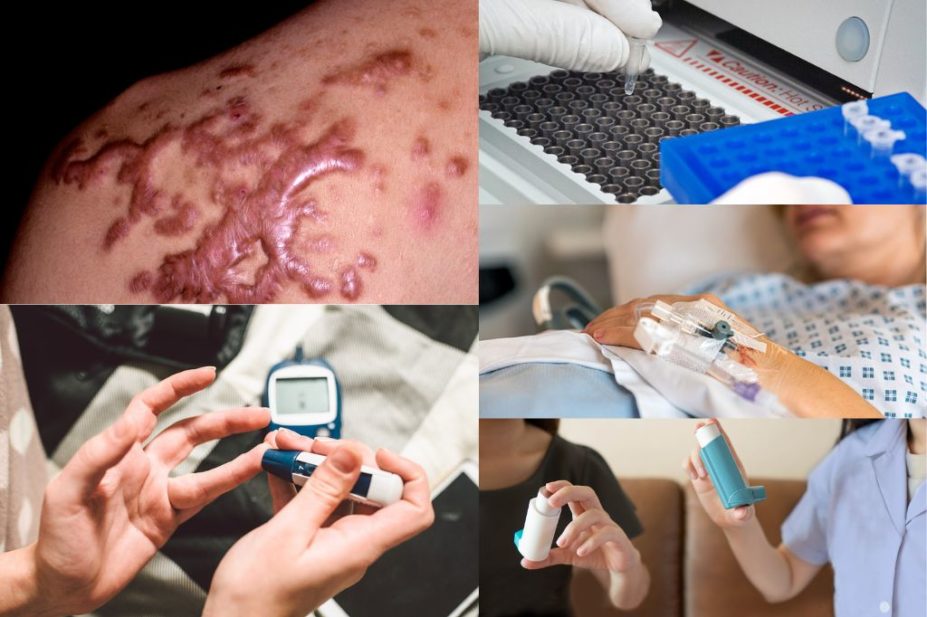
Shutterstock.com / JAMES KING-HOLMES / ALAMY STOCK PHOTO / CID - ISM / SCIENCE PHOTO LIBRARY
It has been another busy year for The Pharmaceutical Journal, from the publication of the ‘pharmacogenomics’ digital special to our continued focus on green pharmacy and minimising the impact of medicines on the environment; we continue to publish forward-facing resources that support pharmacists in their learning and development.
Our end-of-year quiz is broken down by clinical area, giving our readers the chance to reflect and identify any areas that may benefit from focused learning ahead of revalidation. Work your way through the quiz by expanding the questions in the answer boxes below. When you have answered all the questions, select ‘Finish Quiz’ at the bottom of the page to see your score.
Liver disease
Liver function tests (LFTs) are ordered to inform a new diagnosis of liver injury, worsening of a diagnosed condition, or to monitor the progression of a liver disease. LFTs are not used in isolation, but are interpreted together and in conjunction with past medical history, the presence of other signs and symptoms of liver disease and any relevant scans or biopsies. Expand question 1 to test your knowledge.
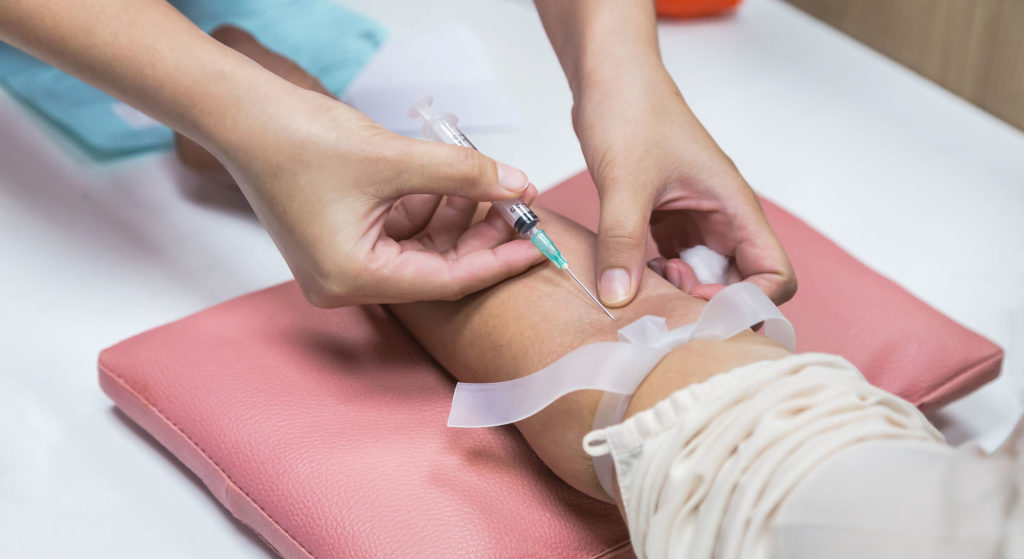
Shutterstock.com
Quiz Summary
0 of 15 Questions completed
Questions:
Information
You have already completed the quiz before. Hence you can not start it again.
Quiz is loading...
You must sign in or sign up to start the quiz.
You must first complete the following:
Results
Results
0 of 15 Questions answered correctly
Your time:
Time has elapsed
You have reached 0 of 0 point(s), (0)
Earned Point(s): 0 of 0, (0)
0 Essay(s) Pending (Possible Point(s): 0)
Categories
- Not categorized 0%
- 1
- 2
- 3
- 4
- 5
- 6
- 7
- 8
- 9
- 10
- 11
- 12
- 13
- 14
- 15
- Current
- Review
- Answered
- Correct
- Incorrect
- Question 1 of 15
1. Question
Match the abnormal liver function test results with the most likely cause.
Sort elements
- Isolated rise in bilirubin, all other tests are within range
- Raised aspartate aminotransferase (AST) and alanine aminotransferase (ALT), with an AST:ALT ratio of 3:1 and raised gamma-glutamyl transferase
- Raised aspartate aminotransferase and alanine aminotransferase that is >18 x upper normal limit
- Raised gamma-glutamyl transferase, alkaline phosphatase and bilirubin
- Isolated rise in gamma-glutamyl transferase, all other tests are within range
- Gilbert’s syndrome
- Alcoholic hepatitis
- Paracetamol overdose
- Cholestasis
- Patient is taking phenytoin
CorrectIncorrect - Question 2 of 15
2. Question
Stevens-Johnson syndrome (pictured above) is a serious cutaneous reaction that can be caused by certain medicines. Please select the two anti-seizure medicines from this list that are most likely to cause this reaction.
CorrectIncorrect - Question 3 of 15
3. Question
What consequence of increased gluconeogenesis and glycogenolysis (see image above) results in the quartet of symptoms commonly known as the 'four Ts’ (toilet, thirsty, tired, thinner) that are common symptoms of diabetic ketoacidosis?
CorrectIncorrect - Question 4 of 15
4. Question
Numerical tools may be inappropriate at evaluating pain in certain patients, in which of the following patients should an alternative strategy be used? Select all answers that apply.
CorrectIncorrect - Question 5 of 15
5. Question
Fill in the blanks.
There are several patient groups who may be suitable for review to potentially switch inhaler devices. Individual patients should be prioritised for review rather than attempting a blanket inhaler switch policy; this includes those with poor , poor , poor , excessive short-acting beta-agonist use and those prescribed mixed types of inhaler devices.
CorrectIncorrect - Question 6 of 15
6. Question
Look at the three images of different scar types above and match them with the correct definition.
Sort elements
- Normotrophic scar
- Hypertrophic scar
- Keloid scar
- A
- B
- C
CorrectIncorrect - Question 7 of 15
7. Question
Fill in the blanks.
Heterozygous familial hypercholesterolaemia is an autosomal inherited condition where parent with an altered gene has a % chance of passing on that altered gene to each of their children.
CorrectIncorrect - Question 8 of 15
8. Question
Which two of the following statements about immune checkpoint inhibitor adverse event timescales are correct?
CorrectIncorrect - Question 9 of 15
9. Question
Which of the following options are most likely to cause pernicious anaemia and a resulting vitamin B12 deficiency via malabsorption? Select all answers that apply.
CorrectIncorrect - Question 10 of 15
10. Question
Gout is caused by the build-up of which metabolic by-product in the joints?
CorrectIncorrect - Question 11 of 15
11. Question
Hyperkalaemia can be caused by medicines that cause retention of potassium. Match the following medicines that can cause hyperkalaemia with their indications.
Sort elements
- Hypertension, heart failure, secondary prevention following myocardial infarction
- Hypertension, heart failure
- Ascites, heart failure
- Prevention and treatment of venous thromboembolism
- Angiotensin-converting enzyme inhibitors (e.g. ramipril)
- Angiotensin II receptor antagonists (e.g. candesartan)
- Aldosterone receptor antagonists (e.g. spironolactone, eplerenone)
- Low-molecular-weight heparins (e.g. enoxaparin)
CorrectIncorrect - Question 12 of 15
12. Question
What is the most commonly used advanced therapy medicinal product in the UK?
CorrectIncorrect - Question 13 of 15
13. Question
A DPYD variant is shown above. Order the following nomenclature labels that are missing from the figure directionally left to right.
- The gene symbol
- The 'reference' nucleotide — which is no longer present
- The nucleotide that has been substituted and is now present in the gene
- Nucleotide position within the gene
- The coding region of the gene
View:
CorrectIncorrect - Question 14 of 15
14. Question
The risk factors associated with premature ovarian insufficiency differ by ethnicity, true or false?
CorrectIncorrect - Question 15 of 15
15. Question
One approach to quality improvement allows solutions to be tested on a smaller scale, giving the opportunity to see whether the proposed change will succeed before a full implementation.
Put the steps of this approach in the correct order.
- Study
- Plan
- Act
- Do
View:
CorrectIncorrect
This question is from ‘Liver function tests: indication and interpretation’. Please refer to the original article if you would like to know more.
Neurological conditions
Anti-seizure medicines (ASMs) were, until recently, referred to as ‘anti-epileptic drugs’. The change in terminology reflects that these drugs treat seizures, not the underlying condition. It is important to consider the possible side effects when treating patients with ASMs. Expand question 2 to test your knowledge.
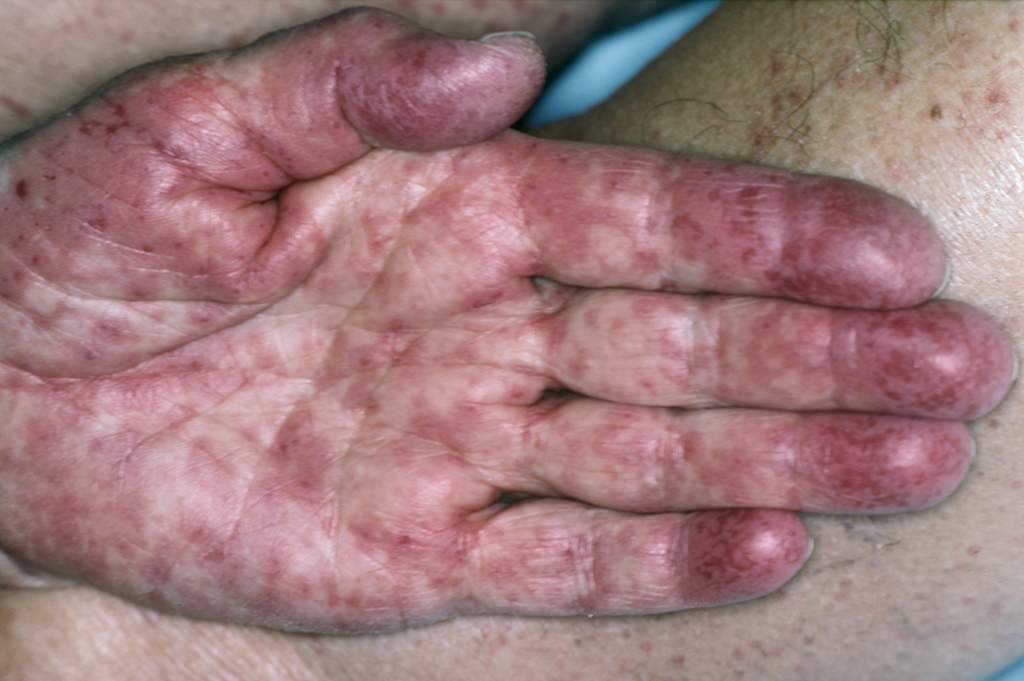
ISM / SCIENCE PHOTO LIBRARY
Quiz Summary
0 of 15 Questions completed
Questions:
Information
You have already completed the quiz before. Hence you can not start it again.
Quiz is loading...
You must sign in or sign up to start the quiz.
You must first complete the following:
Results
Results
0 of 15 Questions answered correctly
Your time:
Time has elapsed
You have reached 0 of 0 point(s), (0)
Earned Point(s): 0 of 0, (0)
0 Essay(s) Pending (Possible Point(s): 0)
Categories
- Not categorized 0%
- 1
- 2
- 3
- 4
- 5
- 6
- 7
- 8
- 9
- 10
- 11
- 12
- 13
- 14
- 15
- Current
- Review
- Answered
- Correct
- Incorrect
- Question 1 of 15
1. Question
Match the abnormal liver function test results with the most likely cause.
Sort elements
- Isolated rise in bilirubin, all other tests are within range
- Raised aspartate aminotransferase (AST) and alanine aminotransferase (ALT), with an AST:ALT ratio of 3:1 and raised gamma-glutamyl transferase
- Raised aspartate aminotransferase and alanine aminotransferase that is >18 x upper normal limit
- Raised gamma-glutamyl transferase, alkaline phosphatase and bilirubin
- Isolated rise in gamma-glutamyl transferase, all other tests are within range
- Gilbert’s syndrome
- Alcoholic hepatitis
- Paracetamol overdose
- Cholestasis
- Patient is taking phenytoin
CorrectIncorrect - Question 2 of 15
2. Question
Stevens-Johnson syndrome (pictured above) is a serious cutaneous reaction that can be caused by certain medicines. Please select the two anti-seizure medicines from this list that are most likely to cause this reaction.
CorrectIncorrect - Question 3 of 15
3. Question
What consequence of increased gluconeogenesis and glycogenolysis (see image above) results in the quartet of symptoms commonly known as the 'four Ts’ (toilet, thirsty, tired, thinner) that are common symptoms of diabetic ketoacidosis?
CorrectIncorrect - Question 4 of 15
4. Question
Numerical tools may be inappropriate at evaluating pain in certain patients, in which of the following patients should an alternative strategy be used? Select all answers that apply.
CorrectIncorrect - Question 5 of 15
5. Question
Fill in the blanks.
There are several patient groups who may be suitable for review to potentially switch inhaler devices. Individual patients should be prioritised for review rather than attempting a blanket inhaler switch policy; this includes those with poor , poor , poor , excessive short-acting beta-agonist use and those prescribed mixed types of inhaler devices.
CorrectIncorrect - Question 6 of 15
6. Question
Look at the three images of different scar types above and match them with the correct definition.
Sort elements
- Normotrophic scar
- Hypertrophic scar
- Keloid scar
- A
- B
- C
CorrectIncorrect - Question 7 of 15
7. Question
Fill in the blanks.
Heterozygous familial hypercholesterolaemia is an autosomal inherited condition where parent with an altered gene has a % chance of passing on that altered gene to each of their children.
CorrectIncorrect - Question 8 of 15
8. Question
Which two of the following statements about immune checkpoint inhibitor adverse event timescales are correct?
CorrectIncorrect - Question 9 of 15
9. Question
Which of the following options are most likely to cause pernicious anaemia and a resulting vitamin B12 deficiency via malabsorption? Select all answers that apply.
CorrectIncorrect - Question 10 of 15
10. Question
Gout is caused by the build-up of which metabolic by-product in the joints?
CorrectIncorrect - Question 11 of 15
11. Question
Hyperkalaemia can be caused by medicines that cause retention of potassium. Match the following medicines that can cause hyperkalaemia with their indications.
Sort elements
- Hypertension, heart failure, secondary prevention following myocardial infarction
- Hypertension, heart failure
- Ascites, heart failure
- Prevention and treatment of venous thromboembolism
- Angiotensin-converting enzyme inhibitors (e.g. ramipril)
- Angiotensin II receptor antagonists (e.g. candesartan)
- Aldosterone receptor antagonists (e.g. spironolactone, eplerenone)
- Low-molecular-weight heparins (e.g. enoxaparin)
CorrectIncorrect - Question 12 of 15
12. Question
What is the most commonly used advanced therapy medicinal product in the UK?
CorrectIncorrect - Question 13 of 15
13. Question
A DPYD variant is shown above. Order the following nomenclature labels that are missing from the figure directionally left to right.
- The gene symbol
- The 'reference' nucleotide — which is no longer present
- Nucleotide position within the gene
- The coding region of the gene
- The nucleotide that has been substituted and is now present in the gene
View:
CorrectIncorrect - Question 14 of 15
14. Question
The risk factors associated with premature ovarian insufficiency differ by ethnicity, true or false?
CorrectIncorrect - Question 15 of 15
15. Question
One approach to quality improvement allows solutions to be tested on a smaller scale, giving the opportunity to see whether the proposed change will succeed before a full implementation.
Put the steps of this approach in the correct order.
- Study
- Act
- Do
- Plan
View:
CorrectIncorrect
This question is from ‘Epilepsy: management’. Please refer to the original article if you would like to know more.
Diabetes
Diabetic ketoacidosis (DKA) is the leading cause of death among children and young to middle-aged adults with type 1 diabetes mellitus. Recognising the symptoms of hyperglycaemia and DKA could help prevent morbidity and mortality associated with this condition. Expand question 3 to test your knowledge.
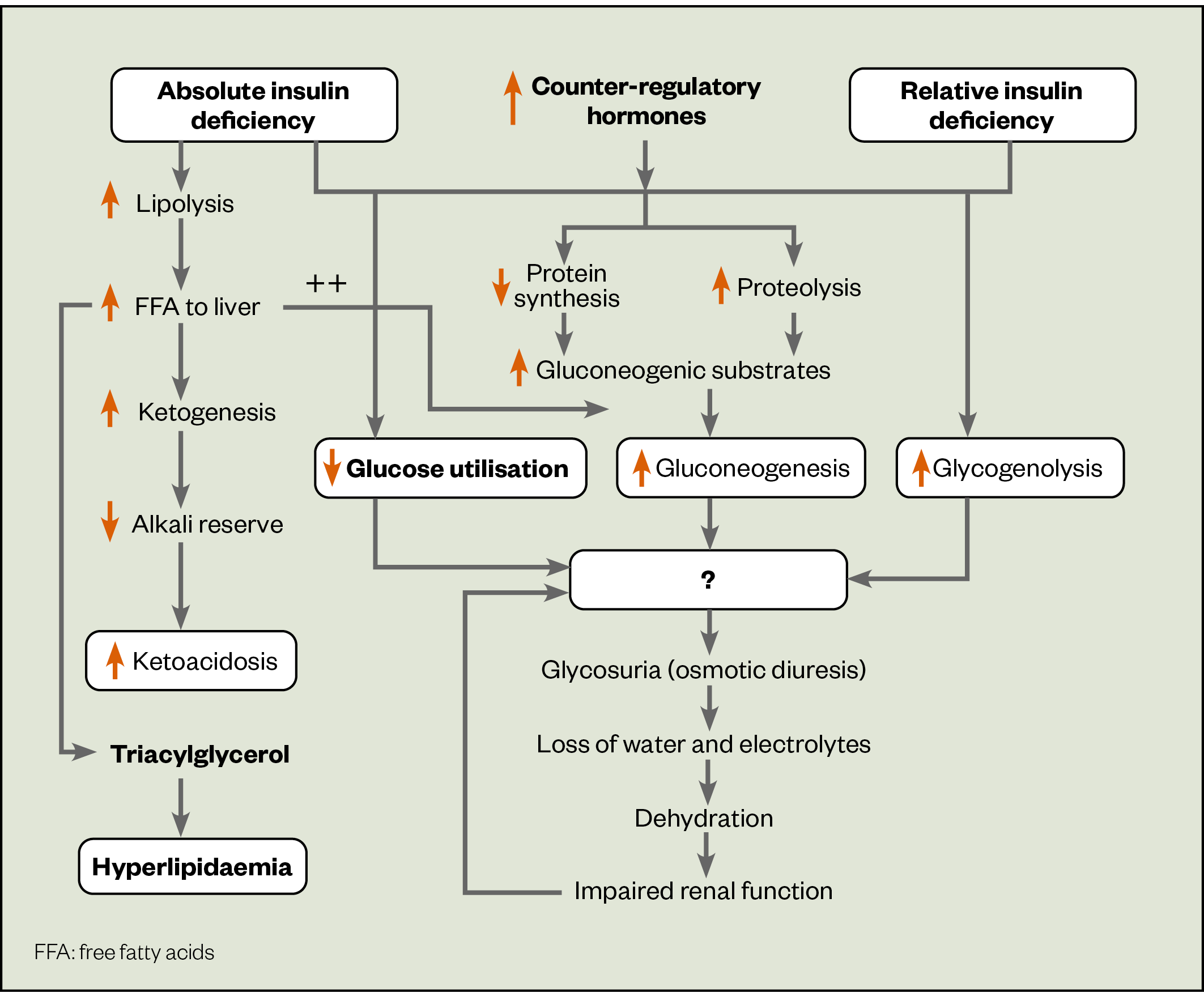
Quiz Summary
0 of 15 Questions completed
Questions:
Information
You have already completed the quiz before. Hence you can not start it again.
Quiz is loading...
You must sign in or sign up to start the quiz.
You must first complete the following:
Results
Results
0 of 15 Questions answered correctly
Your time:
Time has elapsed
You have reached 0 of 0 point(s), (0)
Earned Point(s): 0 of 0, (0)
0 Essay(s) Pending (Possible Point(s): 0)
Categories
- Not categorized 0%
- 1
- 2
- 3
- 4
- 5
- 6
- 7
- 8
- 9
- 10
- 11
- 12
- 13
- 14
- 15
- Current
- Review
- Answered
- Correct
- Incorrect
- Question 1 of 15
1. Question
Match the abnormal liver function test results with the most likely cause.
Sort elements
- Isolated rise in bilirubin, all other tests are within range
- Raised aspartate aminotransferase (AST) and alanine aminotransferase (ALT), with an AST:ALT ratio of 3:1 and raised gamma-glutamyl transferase
- Raised aspartate aminotransferase and alanine aminotransferase that is >18 x upper normal limit
- Raised gamma-glutamyl transferase, alkaline phosphatase and bilirubin
- Isolated rise in gamma-glutamyl transferase, all other tests are within range
- Gilbert’s syndrome
- Alcoholic hepatitis
- Paracetamol overdose
- Cholestasis
- Patient is taking phenytoin
CorrectIncorrect - Question 2 of 15
2. Question
Stevens-Johnson syndrome (pictured above) is a serious cutaneous reaction that can be caused by certain medicines. Please select the two anti-seizure medicines from this list that are most likely to cause this reaction.
CorrectIncorrect - Question 3 of 15
3. Question
What consequence of increased gluconeogenesis and glycogenolysis (see image above) results in the quartet of symptoms commonly known as the 'four Ts’ (toilet, thirsty, tired, thinner) that are common symptoms of diabetic ketoacidosis?
CorrectIncorrect - Question 4 of 15
4. Question
Numerical tools may be inappropriate at evaluating pain in certain patients, in which of the following patients should an alternative strategy be used? Select all answers that apply.
CorrectIncorrect - Question 5 of 15
5. Question
Fill in the blanks.
There are several patient groups who may be suitable for review to potentially switch inhaler devices. Individual patients should be prioritised for review rather than attempting a blanket inhaler switch policy; this includes those with poor , poor , poor , excessive short-acting beta-agonist use and those prescribed mixed types of inhaler devices.
CorrectIncorrect - Question 6 of 15
6. Question
Look at the three images of different scar types above and match them with the correct definition.
Sort elements
- Normotrophic scar
- Hypertrophic scar
- Keloid scar
- A
- B
- C
CorrectIncorrect - Question 7 of 15
7. Question
Fill in the blanks.
Heterozygous familial hypercholesterolaemia is an autosomal inherited condition where parent with an altered gene has a % chance of passing on that altered gene to each of their children.
CorrectIncorrect - Question 8 of 15
8. Question
Which two of the following statements about immune checkpoint inhibitor adverse event timescales are correct?
CorrectIncorrect - Question 9 of 15
9. Question
Which of the following options are most likely to cause pernicious anaemia and a resulting vitamin B12 deficiency via malabsorption? Select all answers that apply.
CorrectIncorrect - Question 10 of 15
10. Question
Gout is caused by the build-up of which metabolic by-product in the joints?
CorrectIncorrect - Question 11 of 15
11. Question
Hyperkalaemia can be caused by medicines that cause retention of potassium. Match the following medicines that can cause hyperkalaemia with their indications.
Sort elements
- Hypertension, heart failure, secondary prevention following myocardial infarction
- Hypertension, heart failure
- Ascites, heart failure
- Prevention and treatment of venous thromboembolism
- Angiotensin-converting enzyme inhibitors (e.g. ramipril)
- Angiotensin II receptor antagonists (e.g. candesartan)
- Aldosterone receptor antagonists (e.g. spironolactone, eplerenone)
- Low-molecular-weight heparins (e.g. enoxaparin)
CorrectIncorrect - Question 12 of 15
12. Question
What is the most commonly used advanced therapy medicinal product in the UK?
CorrectIncorrect - Question 13 of 15
13. Question
A DPYD variant is shown above. Order the following nomenclature labels that are missing from the figure directionally left to right.
- The 'reference' nucleotide — which is no longer present
- Nucleotide position within the gene
- The gene symbol
- The coding region of the gene
- The nucleotide that has been substituted and is now present in the gene
View:
CorrectIncorrect - Question 14 of 15
14. Question
The risk factors associated with premature ovarian insufficiency differ by ethnicity, true or false?
CorrectIncorrect - Question 15 of 15
15. Question
One approach to quality improvement allows solutions to be tested on a smaller scale, giving the opportunity to see whether the proposed change will succeed before a full implementation.
Put the steps of this approach in the correct order.
- Act
- Study
- Plan
- Do
View:
CorrectIncorrect
This question is from ‘Diabetic ketoacidosis in adults: identification, diagnosis and management’. Please refer to the original article if you would like to know more.
Pain management
Pictured is the visual analogue scale (VAS), which can be used to assess pain intensity in the postoperative period. The VAS uses a scale from 0 (no pain) to 10 (worst pain imaginable) and can be used to assess pain over the previous 24 hours or over a longer time period. Expand question 4 to test your knowledge.

Quiz Summary
0 of 15 Questions completed
Questions:
Information
You have already completed the quiz before. Hence you can not start it again.
Quiz is loading...
You must sign in or sign up to start the quiz.
You must first complete the following:
Results
Results
0 of 15 Questions answered correctly
Your time:
Time has elapsed
You have reached 0 of 0 point(s), (0)
Earned Point(s): 0 of 0, (0)
0 Essay(s) Pending (Possible Point(s): 0)
Categories
- Not categorized 0%
- 1
- 2
- 3
- 4
- 5
- 6
- 7
- 8
- 9
- 10
- 11
- 12
- 13
- 14
- 15
- Current
- Review
- Answered
- Correct
- Incorrect
- Question 1 of 15
1. Question
Match the abnormal liver function test results with the most likely cause.
Sort elements
- Isolated rise in bilirubin, all other tests are within range
- Raised aspartate aminotransferase (AST) and alanine aminotransferase (ALT), with an AST:ALT ratio of 3:1 and raised gamma-glutamyl transferase
- Raised aspartate aminotransferase and alanine aminotransferase that is >18 x upper normal limit
- Raised gamma-glutamyl transferase, alkaline phosphatase and bilirubin
- Isolated rise in gamma-glutamyl transferase, all other tests are within range
- Gilbert’s syndrome
- Alcoholic hepatitis
- Paracetamol overdose
- Cholestasis
- Patient is taking phenytoin
CorrectIncorrect - Question 2 of 15
2. Question
Stevens-Johnson syndrome (pictured above) is a serious cutaneous reaction that can be caused by certain medicines. Please select the two anti-seizure medicines from this list that are most likely to cause this reaction.
CorrectIncorrect - Question 3 of 15
3. Question
What consequence of increased gluconeogenesis and glycogenolysis (see image above) results in the quartet of symptoms commonly known as the 'four Ts’ (toilet, thirsty, tired, thinner) that are common symptoms of diabetic ketoacidosis?
CorrectIncorrect - Question 4 of 15
4. Question
Numerical tools may be inappropriate at evaluating pain in certain patients, in which of the following patients should an alternative strategy be used? Select all answers that apply.
CorrectIncorrect - Question 5 of 15
5. Question
Fill in the blanks.
There are several patient groups who may be suitable for review to potentially switch inhaler devices. Individual patients should be prioritised for review rather than attempting a blanket inhaler switch policy; this includes those with poor , poor , poor , excessive short-acting beta-agonist use and those prescribed mixed types of inhaler devices.
CorrectIncorrect - Question 6 of 15
6. Question
Look at the three images of different scar types above and match them with the correct definition.
Sort elements
- Normotrophic scar
- Hypertrophic scar
- Keloid scar
- A
- B
- C
CorrectIncorrect - Question 7 of 15
7. Question
Fill in the blanks.
Heterozygous familial hypercholesterolaemia is an autosomal inherited condition where parent with an altered gene has a % chance of passing on that altered gene to each of their children.
CorrectIncorrect - Question 8 of 15
8. Question
Which two of the following statements about immune checkpoint inhibitor adverse event timescales are correct?
CorrectIncorrect - Question 9 of 15
9. Question
Which of the following options are most likely to cause pernicious anaemia and a resulting vitamin B12 deficiency via malabsorption? Select all answers that apply.
CorrectIncorrect - Question 10 of 15
10. Question
Gout is caused by the build-up of which metabolic by-product in the joints?
CorrectIncorrect - Question 11 of 15
11. Question
Hyperkalaemia can be caused by medicines that cause retention of potassium. Match the following medicines that can cause hyperkalaemia with their indications.
Sort elements
- Hypertension, heart failure, secondary prevention following myocardial infarction
- Hypertension, heart failure
- Ascites, heart failure
- Prevention and treatment of venous thromboembolism
- Angiotensin-converting enzyme inhibitors (e.g. ramipril)
- Angiotensin II receptor antagonists (e.g. candesartan)
- Aldosterone receptor antagonists (e.g. spironolactone, eplerenone)
- Low-molecular-weight heparins (e.g. enoxaparin)
CorrectIncorrect - Question 12 of 15
12. Question
What is the most commonly used advanced therapy medicinal product in the UK?
CorrectIncorrect - Question 13 of 15
13. Question
A DPYD variant is shown above. Order the following nomenclature labels that are missing from the figure directionally left to right.
- The coding region of the gene
- The gene symbol
- Nucleotide position within the gene
- The 'reference' nucleotide — which is no longer present
- The nucleotide that has been substituted and is now present in the gene
View:
CorrectIncorrect - Question 14 of 15
14. Question
The risk factors associated with premature ovarian insufficiency differ by ethnicity, true or false?
CorrectIncorrect - Question 15 of 15
15. Question
One approach to quality improvement allows solutions to be tested on a smaller scale, giving the opportunity to see whether the proposed change will succeed before a full implementation.
Put the steps of this approach in the correct order.
- Act
- Do
- Study
- Plan
View:
CorrectIncorrect
This question is from ‘Management of postoperative pain’. Please refer to the original article if you would like to know more.
Respiratory diseases
As with every consumable resource, there is an environmental cost to all types of inhaler and it is important that prescribing decisions are made that maximise individual patient clinical benefit while considering ways to safely minimise the environmental impact. Expand question 5 to test your knowledge.

Shutterstock.com
Quiz Summary
0 of 15 Questions completed
Questions:
Information
You have already completed the quiz before. Hence you can not start it again.
Quiz is loading...
You must sign in or sign up to start the quiz.
You must first complete the following:
Results
Results
0 of 15 Questions answered correctly
Your time:
Time has elapsed
You have reached 0 of 0 point(s), (0)
Earned Point(s): 0 of 0, (0)
0 Essay(s) Pending (Possible Point(s): 0)
Categories
- Not categorized 0%
- 1
- 2
- 3
- 4
- 5
- 6
- 7
- 8
- 9
- 10
- 11
- 12
- 13
- 14
- 15
- Current
- Review
- Answered
- Correct
- Incorrect
- Question 1 of 15
1. Question
Match the abnormal liver function test results with the most likely cause.
Sort elements
- Isolated rise in bilirubin, all other tests are within range
- Raised aspartate aminotransferase (AST) and alanine aminotransferase (ALT), with an AST:ALT ratio of 3:1 and raised gamma-glutamyl transferase
- Raised aspartate aminotransferase and alanine aminotransferase that is >18 x upper normal limit
- Raised gamma-glutamyl transferase, alkaline phosphatase and bilirubin
- Isolated rise in gamma-glutamyl transferase, all other tests are within range
- Gilbert’s syndrome
- Alcoholic hepatitis
- Paracetamol overdose
- Cholestasis
- Patient is taking phenytoin
CorrectIncorrect - Question 2 of 15
2. Question
Stevens-Johnson syndrome (pictured above) is a serious cutaneous reaction that can be caused by certain medicines. Please select the two anti-seizure medicines from this list that are most likely to cause this reaction.
CorrectIncorrect - Question 3 of 15
3. Question
What consequence of increased gluconeogenesis and glycogenolysis (see image above) results in the quartet of symptoms commonly known as the 'four Ts’ (toilet, thirsty, tired, thinner) that are common symptoms of diabetic ketoacidosis?
CorrectIncorrect - Question 4 of 15
4. Question
Numerical tools may be inappropriate at evaluating pain in certain patients, in which of the following patients should an alternative strategy be used? Select all answers that apply.
CorrectIncorrect - Question 5 of 15
5. Question
Fill in the blanks.
There are several patient groups who may be suitable for review to potentially switch inhaler devices. Individual patients should be prioritised for review rather than attempting a blanket inhaler switch policy; this includes those with poor , poor , poor , excessive short-acting beta-agonist use and those prescribed mixed types of inhaler devices.
CorrectIncorrect - Question 6 of 15
6. Question
Look at the three images of different scar types above and match them with the correct definition.
Sort elements
- Normotrophic scar
- Hypertrophic scar
- Keloid scar
- A
- B
- C
CorrectIncorrect - Question 7 of 15
7. Question
Fill in the blanks.
Heterozygous familial hypercholesterolaemia is an autosomal inherited condition where parent with an altered gene has a % chance of passing on that altered gene to each of their children.
CorrectIncorrect - Question 8 of 15
8. Question
Which two of the following statements about immune checkpoint inhibitor adverse event timescales are correct?
CorrectIncorrect - Question 9 of 15
9. Question
Which of the following options are most likely to cause pernicious anaemia and a resulting vitamin B12 deficiency via malabsorption? Select all answers that apply.
CorrectIncorrect - Question 10 of 15
10. Question
Gout is caused by the build-up of which metabolic by-product in the joints?
CorrectIncorrect - Question 11 of 15
11. Question
Hyperkalaemia can be caused by medicines that cause retention of potassium. Match the following medicines that can cause hyperkalaemia with their indications.
Sort elements
- Hypertension, heart failure, secondary prevention following myocardial infarction
- Hypertension, heart failure
- Ascites, heart failure
- Prevention and treatment of venous thromboembolism
- Angiotensin-converting enzyme inhibitors (e.g. ramipril)
- Angiotensin II receptor antagonists (e.g. candesartan)
- Aldosterone receptor antagonists (e.g. spironolactone, eplerenone)
- Low-molecular-weight heparins (e.g. enoxaparin)
CorrectIncorrect - Question 12 of 15
12. Question
What is the most commonly used advanced therapy medicinal product in the UK?
CorrectIncorrect - Question 13 of 15
13. Question
A DPYD variant is shown above. Order the following nomenclature labels that are missing from the figure directionally left to right.
- The gene symbol
- Nucleotide position within the gene
- The nucleotide that has been substituted and is now present in the gene
- The coding region of the gene
- The 'reference' nucleotide — which is no longer present
View:
CorrectIncorrect - Question 14 of 15
14. Question
The risk factors associated with premature ovarian insufficiency differ by ethnicity, true or false?
CorrectIncorrect - Question 15 of 15
15. Question
One approach to quality improvement allows solutions to be tested on a smaller scale, giving the opportunity to see whether the proposed change will succeed before a full implementation.
Put the steps of this approach in the correct order.
- Study
- Plan
- Do
- Act
View:
CorrectIncorrect
This question is from ‘Best practice principles for inhaler prescribing’. Please refer to the original article if you would like to know more.
Dermatology
A keloid scar, or keloid, is a dermal fibroproliferative growth caused by pathologic wound healing following injury to the skin — for example, from ear piercings, burns, acne scarring and surgical wounds. Expand question 6 to test your knowledge.
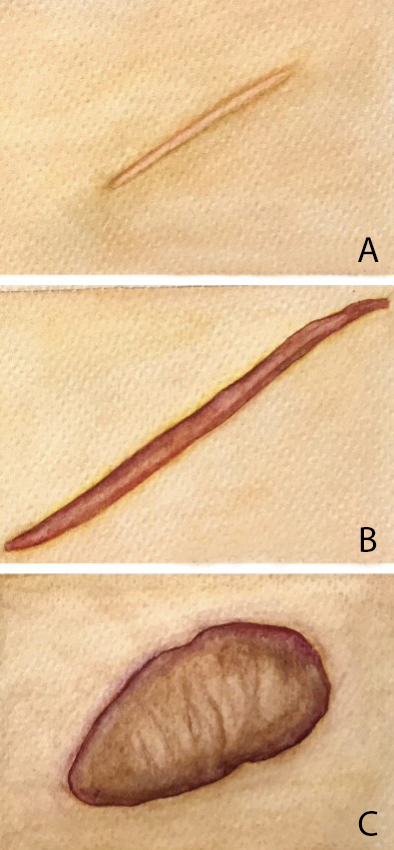
Quiz Summary
0 of 15 Questions completed
Questions:
Information
You have already completed the quiz before. Hence you can not start it again.
Quiz is loading...
You must sign in or sign up to start the quiz.
You must first complete the following:
Results
Results
0 of 15 Questions answered correctly
Your time:
Time has elapsed
You have reached 0 of 0 point(s), (0)
Earned Point(s): 0 of 0, (0)
0 Essay(s) Pending (Possible Point(s): 0)
Categories
- Not categorized 0%
- 1
- 2
- 3
- 4
- 5
- 6
- 7
- 8
- 9
- 10
- 11
- 12
- 13
- 14
- 15
- Current
- Review
- Answered
- Correct
- Incorrect
- Question 1 of 15
1. Question
Match the abnormal liver function test results with the most likely cause.
Sort elements
- Isolated rise in bilirubin, all other tests are within range
- Raised aspartate aminotransferase (AST) and alanine aminotransferase (ALT), with an AST:ALT ratio of 3:1 and raised gamma-glutamyl transferase
- Raised aspartate aminotransferase and alanine aminotransferase that is >18 x upper normal limit
- Raised gamma-glutamyl transferase, alkaline phosphatase and bilirubin
- Isolated rise in gamma-glutamyl transferase, all other tests are within range
- Gilbert’s syndrome
- Alcoholic hepatitis
- Paracetamol overdose
- Cholestasis
- Patient is taking phenytoin
CorrectIncorrect - Question 2 of 15
2. Question
Stevens-Johnson syndrome (pictured above) is a serious cutaneous reaction that can be caused by certain medicines. Please select the two anti-seizure medicines from this list that are most likely to cause this reaction.
CorrectIncorrect - Question 3 of 15
3. Question
What consequence of increased gluconeogenesis and glycogenolysis (see image above) results in the quartet of symptoms commonly known as the 'four Ts’ (toilet, thirsty, tired, thinner) that are common symptoms of diabetic ketoacidosis?
CorrectIncorrect - Question 4 of 15
4. Question
Numerical tools may be inappropriate at evaluating pain in certain patients, in which of the following patients should an alternative strategy be used? Select all answers that apply.
CorrectIncorrect - Question 5 of 15
5. Question
Fill in the blanks.
There are several patient groups who may be suitable for review to potentially switch inhaler devices. Individual patients should be prioritised for review rather than attempting a blanket inhaler switch policy; this includes those with poor , poor , poor , excessive short-acting beta-agonist use and those prescribed mixed types of inhaler devices.
CorrectIncorrect - Question 6 of 15
6. Question
Look at the three images of different scar types above and match them with the correct definition.
Sort elements
- Normotrophic scar
- Hypertrophic scar
- Keloid scar
- A
- B
- C
CorrectIncorrect - Question 7 of 15
7. Question
Fill in the blanks.
Heterozygous familial hypercholesterolaemia is an autosomal inherited condition where parent with an altered gene has a % chance of passing on that altered gene to each of their children.
CorrectIncorrect - Question 8 of 15
8. Question
Which two of the following statements about immune checkpoint inhibitor adverse event timescales are correct?
CorrectIncorrect - Question 9 of 15
9. Question
Which of the following options are most likely to cause pernicious anaemia and a resulting vitamin B12 deficiency via malabsorption? Select all answers that apply.
CorrectIncorrect - Question 10 of 15
10. Question
Gout is caused by the build-up of which metabolic by-product in the joints?
CorrectIncorrect - Question 11 of 15
11. Question
Hyperkalaemia can be caused by medicines that cause retention of potassium. Match the following medicines that can cause hyperkalaemia with their indications.
Sort elements
- Hypertension, heart failure, secondary prevention following myocardial infarction
- Hypertension, heart failure
- Ascites, heart failure
- Prevention and treatment of venous thromboembolism
- Angiotensin-converting enzyme inhibitors (e.g. ramipril)
- Angiotensin II receptor antagonists (e.g. candesartan)
- Aldosterone receptor antagonists (e.g. spironolactone, eplerenone)
- Low-molecular-weight heparins (e.g. enoxaparin)
CorrectIncorrect - Question 12 of 15
12. Question
What is the most commonly used advanced therapy medicinal product in the UK?
CorrectIncorrect - Question 13 of 15
13. Question
A DPYD variant is shown above. Order the following nomenclature labels that are missing from the figure directionally left to right.
- The nucleotide that has been substituted and is now present in the gene
- The gene symbol
- The 'reference' nucleotide — which is no longer present
- Nucleotide position within the gene
- The coding region of the gene
View:
CorrectIncorrect - Question 14 of 15
14. Question
The risk factors associated with premature ovarian insufficiency differ by ethnicity, true or false?
CorrectIncorrect - Question 15 of 15
15. Question
One approach to quality improvement allows solutions to be tested on a smaller scale, giving the opportunity to see whether the proposed change will succeed before a full implementation.
Put the steps of this approach in the correct order.
- Act
- Do
- Study
- Plan
View:
CorrectIncorrect
This question is from ‘Keloid scars: recognition and management’. Please refer to the original article if you would like to know more.
Cancer
Immune checkpoint inhibitors are a novel class of cancer therapy that have improved the treatment of a broad range of cancers, including renal and bladder cancers. Expand question 7 to test your knowledge.
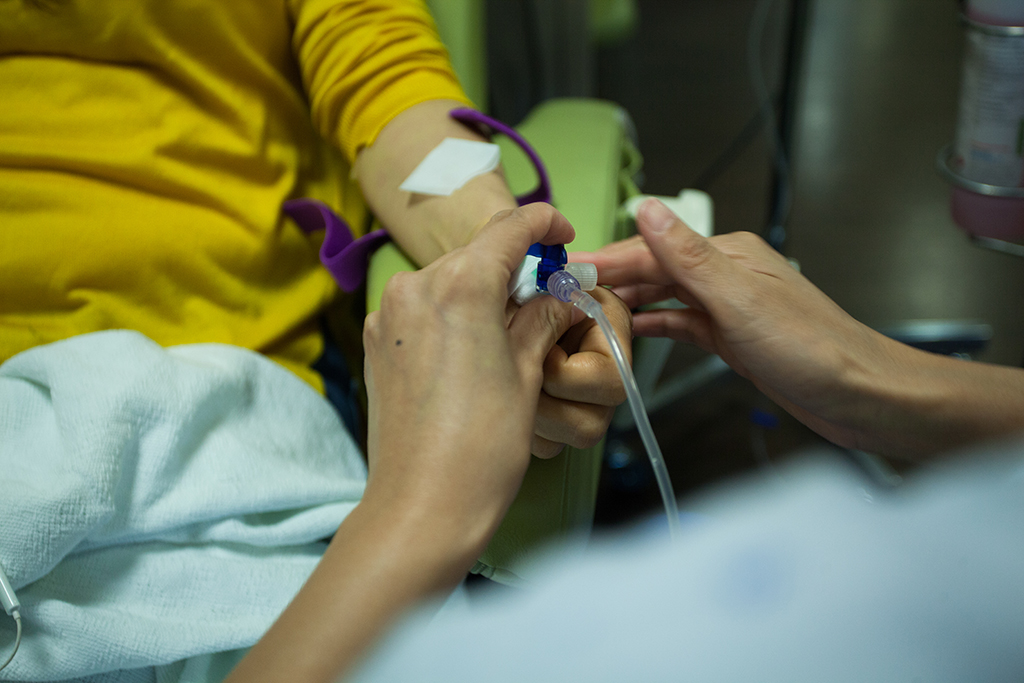
Shutterstock.com
Quiz Summary
0 of 15 Questions completed
Questions:
Information
You have already completed the quiz before. Hence you can not start it again.
Quiz is loading...
You must sign in or sign up to start the quiz.
You must first complete the following:
Results
Results
0 of 15 Questions answered correctly
Your time:
Time has elapsed
You have reached 0 of 0 point(s), (0)
Earned Point(s): 0 of 0, (0)
0 Essay(s) Pending (Possible Point(s): 0)
Categories
- Not categorized 0%
- 1
- 2
- 3
- 4
- 5
- 6
- 7
- 8
- 9
- 10
- 11
- 12
- 13
- 14
- 15
- Current
- Review
- Answered
- Correct
- Incorrect
- Question 1 of 15
1. Question
Match the abnormal liver function test results with the most likely cause.
Sort elements
- Isolated rise in bilirubin, all other tests are within range
- Raised aspartate aminotransferase (AST) and alanine aminotransferase (ALT), with an AST:ALT ratio of 3:1 and raised gamma-glutamyl transferase
- Raised aspartate aminotransferase and alanine aminotransferase that is >18 x upper normal limit
- Raised gamma-glutamyl transferase, alkaline phosphatase and bilirubin
- Isolated rise in gamma-glutamyl transferase, all other tests are within range
- Gilbert’s syndrome
- Alcoholic hepatitis
- Paracetamol overdose
- Cholestasis
- Patient is taking phenytoin
CorrectIncorrect - Question 2 of 15
2. Question
Stevens-Johnson syndrome (pictured above) is a serious cutaneous reaction that can be caused by certain medicines. Please select the two anti-seizure medicines from this list that are most likely to cause this reaction.
CorrectIncorrect - Question 3 of 15
3. Question
What consequence of increased gluconeogenesis and glycogenolysis (see image above) results in the quartet of symptoms commonly known as the 'four Ts’ (toilet, thirsty, tired, thinner) that are common symptoms of diabetic ketoacidosis?
CorrectIncorrect - Question 4 of 15
4. Question
Numerical tools may be inappropriate at evaluating pain in certain patients, in which of the following patients should an alternative strategy be used? Select all answers that apply.
CorrectIncorrect - Question 5 of 15
5. Question
Fill in the blanks.
There are several patient groups who may be suitable for review to potentially switch inhaler devices. Individual patients should be prioritised for review rather than attempting a blanket inhaler switch policy; this includes those with poor , poor , poor , excessive short-acting beta-agonist use and those prescribed mixed types of inhaler devices.
CorrectIncorrect - Question 6 of 15
6. Question
Look at the three images of different scar types above and match them with the correct definition.
Sort elements
- Normotrophic scar
- Hypertrophic scar
- Keloid scar
- A
- B
- C
CorrectIncorrect - Question 7 of 15
7. Question
Fill in the blanks.
Heterozygous familial hypercholesterolaemia is an autosomal inherited condition where parent with an altered gene has a % chance of passing on that altered gene to each of their children.
CorrectIncorrect - Question 8 of 15
8. Question
Which two of the following statements about immune checkpoint inhibitor adverse event timescales are correct?
CorrectIncorrect - Question 9 of 15
9. Question
Which of the following options are most likely to cause pernicious anaemia and a resulting vitamin B12 deficiency via malabsorption? Select all answers that apply.
CorrectIncorrect - Question 10 of 15
10. Question
Gout is caused by the build-up of which metabolic by-product in the joints?
CorrectIncorrect - Question 11 of 15
11. Question
Hyperkalaemia can be caused by medicines that cause retention of potassium. Match the following medicines that can cause hyperkalaemia with their indications.
Sort elements
- Hypertension, heart failure, secondary prevention following myocardial infarction
- Hypertension, heart failure
- Ascites, heart failure
- Prevention and treatment of venous thromboembolism
- Angiotensin-converting enzyme inhibitors (e.g. ramipril)
- Angiotensin II receptor antagonists (e.g. candesartan)
- Aldosterone receptor antagonists (e.g. spironolactone, eplerenone)
- Low-molecular-weight heparins (e.g. enoxaparin)
CorrectIncorrect - Question 12 of 15
12. Question
What is the most commonly used advanced therapy medicinal product in the UK?
CorrectIncorrect - Question 13 of 15
13. Question
A DPYD variant is shown above. Order the following nomenclature labels that are missing from the figure directionally left to right.
- The nucleotide that has been substituted and is now present in the gene
- The coding region of the gene
- The 'reference' nucleotide — which is no longer present
- The gene symbol
- Nucleotide position within the gene
View:
CorrectIncorrect - Question 14 of 15
14. Question
The risk factors associated with premature ovarian insufficiency differ by ethnicity, true or false?
CorrectIncorrect - Question 15 of 15
15. Question
One approach to quality improvement allows solutions to be tested on a smaller scale, giving the opportunity to see whether the proposed change will succeed before a full implementation.
Put the steps of this approach in the correct order.
- Study
- Do
- Plan
- Act
View:
CorrectIncorrect
This question is from ‘Renal cancer: management‘. Please refer to the original article if you would like to know more.
Genetic disorders
Around 1 in 250 people have an inherited condition called heterozygous familial hypercholesterolaemia, which results in a raised level of cholesterol from birth and a significantly increased risk of early heart disease. Expand question 8 to test your knowledge.
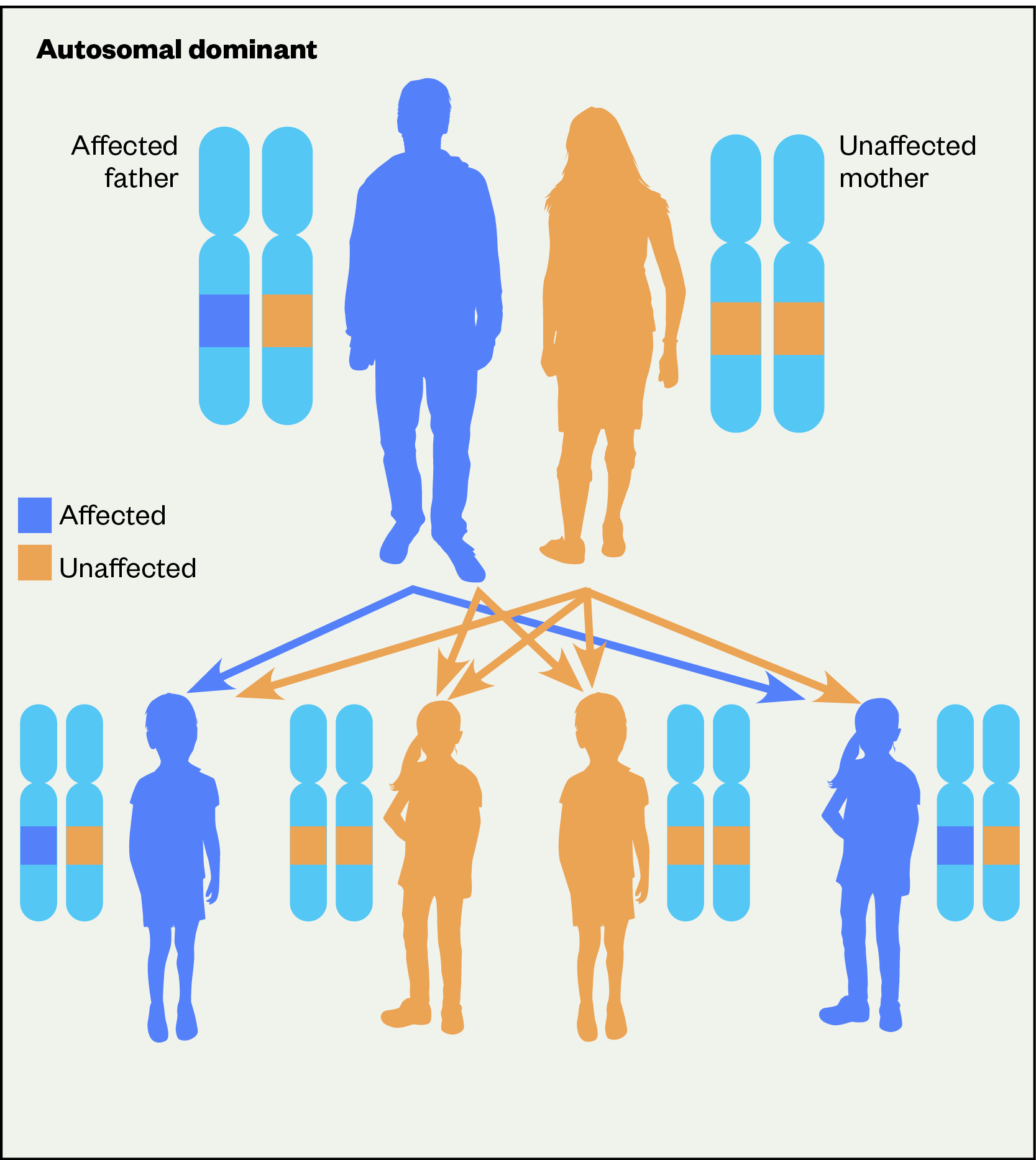
Quiz Summary
0 of 15 Questions completed
Questions:
Information
You have already completed the quiz before. Hence you can not start it again.
Quiz is loading...
You must sign in or sign up to start the quiz.
You must first complete the following:
Results
Results
0 of 15 Questions answered correctly
Your time:
Time has elapsed
You have reached 0 of 0 point(s), (0)
Earned Point(s): 0 of 0, (0)
0 Essay(s) Pending (Possible Point(s): 0)
Categories
- Not categorized 0%
- 1
- 2
- 3
- 4
- 5
- 6
- 7
- 8
- 9
- 10
- 11
- 12
- 13
- 14
- 15
- Current
- Review
- Answered
- Correct
- Incorrect
- Question 1 of 15
1. Question
Match the abnormal liver function test results with the most likely cause.
Sort elements
- Isolated rise in bilirubin, all other tests are within range
- Raised aspartate aminotransferase (AST) and alanine aminotransferase (ALT), with an AST:ALT ratio of 3:1 and raised gamma-glutamyl transferase
- Raised aspartate aminotransferase and alanine aminotransferase that is >18 x upper normal limit
- Raised gamma-glutamyl transferase, alkaline phosphatase and bilirubin
- Isolated rise in gamma-glutamyl transferase, all other tests are within range
- Gilbert’s syndrome
- Alcoholic hepatitis
- Paracetamol overdose
- Cholestasis
- Patient is taking phenytoin
CorrectIncorrect - Question 2 of 15
2. Question
Stevens-Johnson syndrome (pictured above) is a serious cutaneous reaction that can be caused by certain medicines. Please select the two anti-seizure medicines from this list that are most likely to cause this reaction.
CorrectIncorrect - Question 3 of 15
3. Question
What consequence of increased gluconeogenesis and glycogenolysis (see image above) results in the quartet of symptoms commonly known as the 'four Ts’ (toilet, thirsty, tired, thinner) that are common symptoms of diabetic ketoacidosis?
CorrectIncorrect - Question 4 of 15
4. Question
Numerical tools may be inappropriate at evaluating pain in certain patients, in which of the following patients should an alternative strategy be used? Select all answers that apply.
CorrectIncorrect - Question 5 of 15
5. Question
Fill in the blanks.
There are several patient groups who may be suitable for review to potentially switch inhaler devices. Individual patients should be prioritised for review rather than attempting a blanket inhaler switch policy; this includes those with poor , poor , poor , excessive short-acting beta-agonist use and those prescribed mixed types of inhaler devices.
CorrectIncorrect - Question 6 of 15
6. Question
Look at the three images of different scar types above and match them with the correct definition.
Sort elements
- Normotrophic scar
- Hypertrophic scar
- Keloid scar
- A
- B
- C
CorrectIncorrect - Question 7 of 15
7. Question
Fill in the blanks.
Heterozygous familial hypercholesterolaemia is an autosomal inherited condition where parent with an altered gene has a % chance of passing on that altered gene to each of their children.
CorrectIncorrect - Question 8 of 15
8. Question
Which two of the following statements about immune checkpoint inhibitor adverse event timescales are correct?
CorrectIncorrect - Question 9 of 15
9. Question
Which of the following options are most likely to cause pernicious anaemia and a resulting vitamin B12 deficiency via malabsorption? Select all answers that apply.
CorrectIncorrect - Question 10 of 15
10. Question
Gout is caused by the build-up of which metabolic by-product in the joints?
CorrectIncorrect - Question 11 of 15
11. Question
Hyperkalaemia can be caused by medicines that cause retention of potassium. Match the following medicines that can cause hyperkalaemia with their indications.
Sort elements
- Hypertension, heart failure, secondary prevention following myocardial infarction
- Hypertension, heart failure
- Ascites, heart failure
- Prevention and treatment of venous thromboembolism
- Angiotensin-converting enzyme inhibitors (e.g. ramipril)
- Angiotensin II receptor antagonists (e.g. candesartan)
- Aldosterone receptor antagonists (e.g. spironolactone, eplerenone)
- Low-molecular-weight heparins (e.g. enoxaparin)
CorrectIncorrect - Question 12 of 15
12. Question
What is the most commonly used advanced therapy medicinal product in the UK?
CorrectIncorrect - Question 13 of 15
13. Question
A DPYD variant is shown above. Order the following nomenclature labels that are missing from the figure directionally left to right.
- The coding region of the gene
- The gene symbol
- The nucleotide that has been substituted and is now present in the gene
- The 'reference' nucleotide — which is no longer present
- Nucleotide position within the gene
View:
CorrectIncorrect - Question 14 of 15
14. Question
The risk factors associated with premature ovarian insufficiency differ by ethnicity, true or false?
CorrectIncorrect - Question 15 of 15
15. Question
One approach to quality improvement allows solutions to be tested on a smaller scale, giving the opportunity to see whether the proposed change will succeed before a full implementation.
Put the steps of this approach in the correct order.
- Study
- Act
- Plan
- Do
View:
CorrectIncorrect
This question is from ‘Familial hypercholesterolaemia: identification and management‘. Please refer to the original article if you would like to know more.
Haematology
Pernicious anaemia is an autoimmune condition that affects the stomach; however, it is the resultant vitamin B12 deficiency that causes the symptoms commonly associated with the condition. Expand question 9 to test your knowledge.
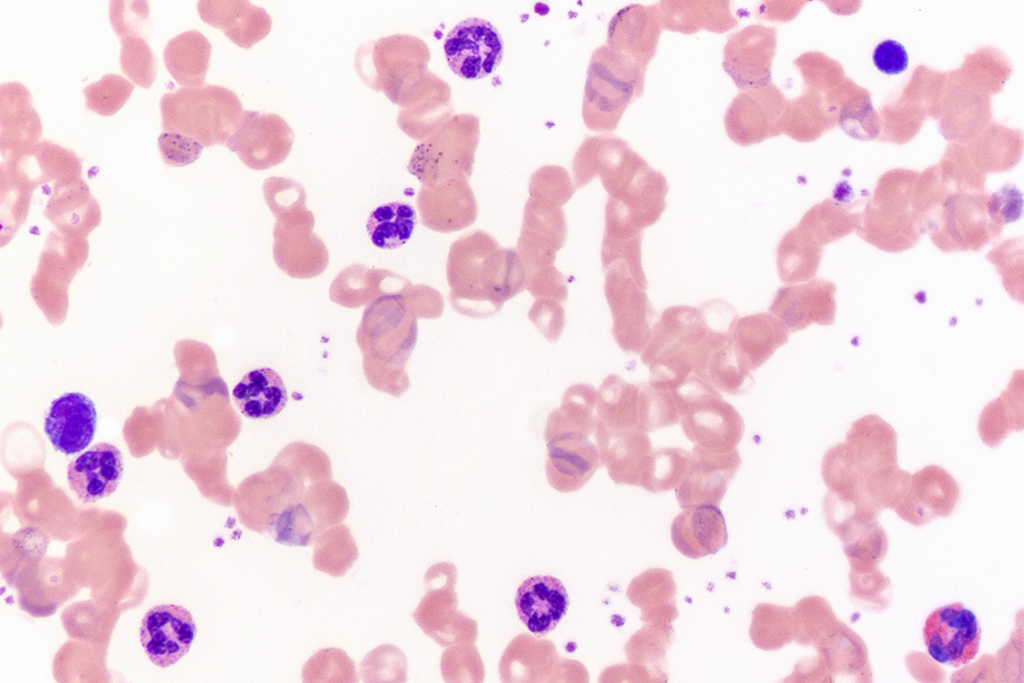
ALVIN TELSER / SCIENCE PHOTO LIBRARY
Quiz Summary
0 of 15 Questions completed
Questions:
Information
You have already completed the quiz before. Hence you can not start it again.
Quiz is loading...
You must sign in or sign up to start the quiz.
You must first complete the following:
Results
Results
0 of 15 Questions answered correctly
Your time:
Time has elapsed
You have reached 0 of 0 point(s), (0)
Earned Point(s): 0 of 0, (0)
0 Essay(s) Pending (Possible Point(s): 0)
Categories
- Not categorized 0%
- 1
- 2
- 3
- 4
- 5
- 6
- 7
- 8
- 9
- 10
- 11
- 12
- 13
- 14
- 15
- Current
- Review
- Answered
- Correct
- Incorrect
- Question 1 of 15
1. Question
Match the abnormal liver function test results with the most likely cause.
Sort elements
- Isolated rise in bilirubin, all other tests are within range
- Raised aspartate aminotransferase (AST) and alanine aminotransferase (ALT), with an AST:ALT ratio of 3:1 and raised gamma-glutamyl transferase
- Raised aspartate aminotransferase and alanine aminotransferase that is >18 x upper normal limit
- Raised gamma-glutamyl transferase, alkaline phosphatase and bilirubin
- Isolated rise in gamma-glutamyl transferase, all other tests are within range
- Gilbert’s syndrome
- Alcoholic hepatitis
- Paracetamol overdose
- Cholestasis
- Patient is taking phenytoin
CorrectIncorrect - Question 2 of 15
2. Question
Stevens-Johnson syndrome (pictured above) is a serious cutaneous reaction that can be caused by certain medicines. Please select the two anti-seizure medicines from this list that are most likely to cause this reaction.
CorrectIncorrect - Question 3 of 15
3. Question
What consequence of increased gluconeogenesis and glycogenolysis (see image above) results in the quartet of symptoms commonly known as the 'four Ts’ (toilet, thirsty, tired, thinner) that are common symptoms of diabetic ketoacidosis?
CorrectIncorrect - Question 4 of 15
4. Question
Numerical tools may be inappropriate at evaluating pain in certain patients, in which of the following patients should an alternative strategy be used? Select all answers that apply.
CorrectIncorrect - Question 5 of 15
5. Question
Fill in the blanks.
There are several patient groups who may be suitable for review to potentially switch inhaler devices. Individual patients should be prioritised for review rather than attempting a blanket inhaler switch policy; this includes those with poor , poor , poor , excessive short-acting beta-agonist use and those prescribed mixed types of inhaler devices.
CorrectIncorrect - Question 6 of 15
6. Question
Look at the three images of different scar types above and match them with the correct definition.
Sort elements
- Normotrophic scar
- Hypertrophic scar
- Keloid scar
- A
- B
- C
CorrectIncorrect - Question 7 of 15
7. Question
Fill in the blanks.
Heterozygous familial hypercholesterolaemia is an autosomal inherited condition where parent with an altered gene has a % chance of passing on that altered gene to each of their children.
CorrectIncorrect - Question 8 of 15
8. Question
Which two of the following statements about immune checkpoint inhibitor adverse event timescales are correct?
CorrectIncorrect - Question 9 of 15
9. Question
Which of the following options are most likely to cause pernicious anaemia and a resulting vitamin B12 deficiency via malabsorption? Select all answers that apply.
CorrectIncorrect - Question 10 of 15
10. Question
Gout is caused by the build-up of which metabolic by-product in the joints?
CorrectIncorrect - Question 11 of 15
11. Question
Hyperkalaemia can be caused by medicines that cause retention of potassium. Match the following medicines that can cause hyperkalaemia with their indications.
Sort elements
- Hypertension, heart failure, secondary prevention following myocardial infarction
- Hypertension, heart failure
- Ascites, heart failure
- Prevention and treatment of venous thromboembolism
- Angiotensin-converting enzyme inhibitors (e.g. ramipril)
- Angiotensin II receptor antagonists (e.g. candesartan)
- Aldosterone receptor antagonists (e.g. spironolactone, eplerenone)
- Low-molecular-weight heparins (e.g. enoxaparin)
CorrectIncorrect - Question 12 of 15
12. Question
What is the most commonly used advanced therapy medicinal product in the UK?
CorrectIncorrect - Question 13 of 15
13. Question
A DPYD variant is shown above. Order the following nomenclature labels that are missing from the figure directionally left to right.
- The gene symbol
- The nucleotide that has been substituted and is now present in the gene
- Nucleotide position within the gene
- The 'reference' nucleotide — which is no longer present
- The coding region of the gene
View:
CorrectIncorrect - Question 14 of 15
14. Question
The risk factors associated with premature ovarian insufficiency differ by ethnicity, true or false?
CorrectIncorrect - Question 15 of 15
15. Question
One approach to quality improvement allows solutions to be tested on a smaller scale, giving the opportunity to see whether the proposed change will succeed before a full implementation.
Put the steps of this approach in the correct order.
- Plan
- Study
- Do
- Act
View:
CorrectIncorrect
This question is from ‘Pernicious anaemia: recognition, diagnosis and management‘. Please refer to the original article if you would like to know more.
Rheumatology
Gout is a common form of arthritis but, despite being easily treatable, often goes undiagnosed or undertreated. It typically presents as an acute onset of a severely painful red and swollen joint(s). Expand question 10 to test your knowledge.
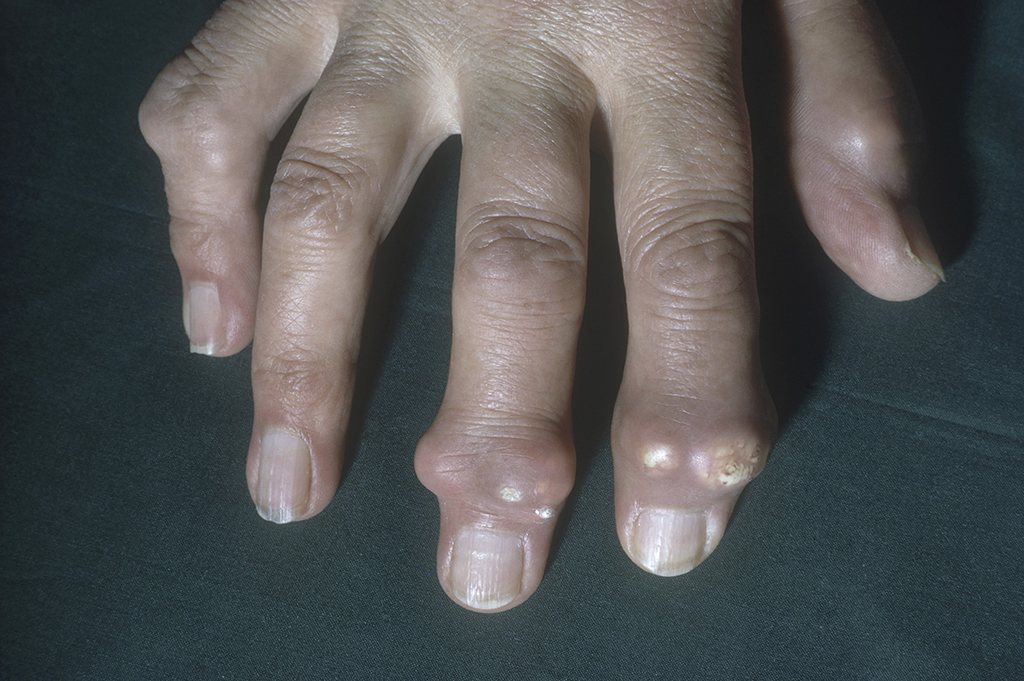
BIOPHOTO ASSOCIATES / SCIENCE PHOTO LIBRARY
Quiz Summary
0 of 15 Questions completed
Questions:
Information
You have already completed the quiz before. Hence you can not start it again.
Quiz is loading...
You must sign in or sign up to start the quiz.
You must first complete the following:
Results
Results
0 of 15 Questions answered correctly
Your time:
Time has elapsed
You have reached 0 of 0 point(s), (0)
Earned Point(s): 0 of 0, (0)
0 Essay(s) Pending (Possible Point(s): 0)
Categories
- Not categorized 0%
- 1
- 2
- 3
- 4
- 5
- 6
- 7
- 8
- 9
- 10
- 11
- 12
- 13
- 14
- 15
- Current
- Review
- Answered
- Correct
- Incorrect
- Question 1 of 15
1. Question
Match the abnormal liver function test results with the most likely cause.
Sort elements
- Isolated rise in bilirubin, all other tests are within range
- Raised aspartate aminotransferase (AST) and alanine aminotransferase (ALT), with an AST:ALT ratio of 3:1 and raised gamma-glutamyl transferase
- Raised aspartate aminotransferase and alanine aminotransferase that is >18 x upper normal limit
- Raised gamma-glutamyl transferase, alkaline phosphatase and bilirubin
- Isolated rise in gamma-glutamyl transferase, all other tests are within range
- Gilbert’s syndrome
- Alcoholic hepatitis
- Paracetamol overdose
- Cholestasis
- Patient is taking phenytoin
CorrectIncorrect - Question 2 of 15
2. Question
Stevens-Johnson syndrome (pictured above) is a serious cutaneous reaction that can be caused by certain medicines. Please select the two anti-seizure medicines from this list that are most likely to cause this reaction.
CorrectIncorrect - Question 3 of 15
3. Question
What consequence of increased gluconeogenesis and glycogenolysis (see image above) results in the quartet of symptoms commonly known as the 'four Ts’ (toilet, thirsty, tired, thinner) that are common symptoms of diabetic ketoacidosis?
CorrectIncorrect - Question 4 of 15
4. Question
Numerical tools may be inappropriate at evaluating pain in certain patients, in which of the following patients should an alternative strategy be used? Select all answers that apply.
CorrectIncorrect - Question 5 of 15
5. Question
Fill in the blanks.
There are several patient groups who may be suitable for review to potentially switch inhaler devices. Individual patients should be prioritised for review rather than attempting a blanket inhaler switch policy; this includes those with poor , poor , poor , excessive short-acting beta-agonist use and those prescribed mixed types of inhaler devices.
CorrectIncorrect - Question 6 of 15
6. Question
Look at the three images of different scar types above and match them with the correct definition.
Sort elements
- Normotrophic scar
- Hypertrophic scar
- Keloid scar
- A
- B
- C
CorrectIncorrect - Question 7 of 15
7. Question
Fill in the blanks.
Heterozygous familial hypercholesterolaemia is an autosomal inherited condition where parent with an altered gene has a % chance of passing on that altered gene to each of their children.
CorrectIncorrect - Question 8 of 15
8. Question
Which two of the following statements about immune checkpoint inhibitor adverse event timescales are correct?
CorrectIncorrect - Question 9 of 15
9. Question
Which of the following options are most likely to cause pernicious anaemia and a resulting vitamin B12 deficiency via malabsorption? Select all answers that apply.
CorrectIncorrect - Question 10 of 15
10. Question
Gout is caused by the build-up of which metabolic by-product in the joints?
CorrectIncorrect - Question 11 of 15
11. Question
Hyperkalaemia can be caused by medicines that cause retention of potassium. Match the following medicines that can cause hyperkalaemia with their indications.
Sort elements
- Hypertension, heart failure, secondary prevention following myocardial infarction
- Hypertension, heart failure
- Ascites, heart failure
- Prevention and treatment of venous thromboembolism
- Angiotensin-converting enzyme inhibitors (e.g. ramipril)
- Angiotensin II receptor antagonists (e.g. candesartan)
- Aldosterone receptor antagonists (e.g. spironolactone, eplerenone)
- Low-molecular-weight heparins (e.g. enoxaparin)
CorrectIncorrect - Question 12 of 15
12. Question
What is the most commonly used advanced therapy medicinal product in the UK?
CorrectIncorrect - Question 13 of 15
13. Question
A DPYD variant is shown above. Order the following nomenclature labels that are missing from the figure directionally left to right.
- The coding region of the gene
- The gene symbol
- The 'reference' nucleotide — which is no longer present
- The nucleotide that has been substituted and is now present in the gene
- Nucleotide position within the gene
View:
CorrectIncorrect - Question 14 of 15
14. Question
The risk factors associated with premature ovarian insufficiency differ by ethnicity, true or false?
CorrectIncorrect - Question 15 of 15
15. Question
One approach to quality improvement allows solutions to be tested on a smaller scale, giving the opportunity to see whether the proposed change will succeed before a full implementation.
Put the steps of this approach in the correct order.
- Do
- Study
- Act
- Plan
View:
CorrectIncorrect
This question is from ‘Treatment and management of gout: the role of pharmacy‘. Please refer to the original article if you would like to know more.
Patient safety
The most common electrolytes in tissues and fluids in the human body (such as blood, urine and sweat) are sodium, potassium, calcium, phosphate and magnesium. Hyperkalemia (i.e. higher than normal potassium) can be caused by medicines that cause retention of potassium. Expand question 11 to test your knowledge.

Shutterstock.com
Quiz Summary
0 of 15 Questions completed
Questions:
Information
You have already completed the quiz before. Hence you can not start it again.
Quiz is loading...
You must sign in or sign up to start the quiz.
You must first complete the following:
Results
Results
0 of 15 Questions answered correctly
Your time:
Time has elapsed
You have reached 0 of 0 point(s), (0)
Earned Point(s): 0 of 0, (0)
0 Essay(s) Pending (Possible Point(s): 0)
Categories
- Not categorized 0%
- 1
- 2
- 3
- 4
- 5
- 6
- 7
- 8
- 9
- 10
- 11
- 12
- 13
- 14
- 15
- Current
- Review
- Answered
- Correct
- Incorrect
- Question 1 of 15
1. Question
Match the abnormal liver function test results with the most likely cause.
Sort elements
- Isolated rise in bilirubin, all other tests are within range
- Raised aspartate aminotransferase (AST) and alanine aminotransferase (ALT), with an AST:ALT ratio of 3:1 and raised gamma-glutamyl transferase
- Raised aspartate aminotransferase and alanine aminotransferase that is >18 x upper normal limit
- Raised gamma-glutamyl transferase, alkaline phosphatase and bilirubin
- Isolated rise in gamma-glutamyl transferase, all other tests are within range
- Gilbert’s syndrome
- Alcoholic hepatitis
- Paracetamol overdose
- Cholestasis
- Patient is taking phenytoin
CorrectIncorrect - Question 2 of 15
2. Question
Stevens-Johnson syndrome (pictured above) is a serious cutaneous reaction that can be caused by certain medicines. Please select the two anti-seizure medicines from this list that are most likely to cause this reaction.
CorrectIncorrect - Question 3 of 15
3. Question
What consequence of increased gluconeogenesis and glycogenolysis (see image above) results in the quartet of symptoms commonly known as the 'four Ts’ (toilet, thirsty, tired, thinner) that are common symptoms of diabetic ketoacidosis?
CorrectIncorrect - Question 4 of 15
4. Question
Numerical tools may be inappropriate at evaluating pain in certain patients, in which of the following patients should an alternative strategy be used? Select all answers that apply.
CorrectIncorrect - Question 5 of 15
5. Question
Fill in the blanks.
There are several patient groups who may be suitable for review to potentially switch inhaler devices. Individual patients should be prioritised for review rather than attempting a blanket inhaler switch policy; this includes those with poor , poor , poor , excessive short-acting beta-agonist use and those prescribed mixed types of inhaler devices.
CorrectIncorrect - Question 6 of 15
6. Question
Look at the three images of different scar types above and match them with the correct definition.
Sort elements
- Normotrophic scar
- Hypertrophic scar
- Keloid scar
- A
- B
- C
CorrectIncorrect - Question 7 of 15
7. Question
Fill in the blanks.
Heterozygous familial hypercholesterolaemia is an autosomal inherited condition where parent with an altered gene has a % chance of passing on that altered gene to each of their children.
CorrectIncorrect - Question 8 of 15
8. Question
Which two of the following statements about immune checkpoint inhibitor adverse event timescales are correct?
CorrectIncorrect - Question 9 of 15
9. Question
Which of the following options are most likely to cause pernicious anaemia and a resulting vitamin B12 deficiency via malabsorption? Select all answers that apply.
CorrectIncorrect - Question 10 of 15
10. Question
Gout is caused by the build-up of which metabolic by-product in the joints?
CorrectIncorrect - Question 11 of 15
11. Question
Hyperkalaemia can be caused by medicines that cause retention of potassium. Match the following medicines that can cause hyperkalaemia with their indications.
Sort elements
- Hypertension, heart failure, secondary prevention following myocardial infarction
- Hypertension, heart failure
- Ascites, heart failure
- Prevention and treatment of venous thromboembolism
- Angiotensin-converting enzyme inhibitors (e.g. ramipril)
- Angiotensin II receptor antagonists (e.g. candesartan)
- Aldosterone receptor antagonists (e.g. spironolactone, eplerenone)
- Low-molecular-weight heparins (e.g. enoxaparin)
CorrectIncorrect - Question 12 of 15
12. Question
What is the most commonly used advanced therapy medicinal product in the UK?
CorrectIncorrect - Question 13 of 15
13. Question
A DPYD variant is shown above. Order the following nomenclature labels that are missing from the figure directionally left to right.
- The gene symbol
- The nucleotide that has been substituted and is now present in the gene
- Nucleotide position within the gene
- The 'reference' nucleotide — which is no longer present
- The coding region of the gene
View:
CorrectIncorrect - Question 14 of 15
14. Question
The risk factors associated with premature ovarian insufficiency differ by ethnicity, true or false?
CorrectIncorrect - Question 15 of 15
15. Question
One approach to quality improvement allows solutions to be tested on a smaller scale, giving the opportunity to see whether the proposed change will succeed before a full implementation.
Put the steps of this approach in the correct order.
- Do
- Study
- Act
- Plan
View:
CorrectIncorrect
This question is from ‘Electrolyte disturbances: causes and management‘. Please refer to the original article if you would like to know more.
Medicines information
Advanced therapy medicinal products are a new class of medicinal products, which includes gene therapies, somatic cellular products and tissue engineered products. These medicines give hope for the management of diseases, such as B cell acute lymphoblastic leukaemia, that currently have limited or no therapeutic options. Expand question 12 to test your knowledge.

TEK IMAGE/SCIENCE PHOTO LIBRARY
Quiz Summary
0 of 15 Questions completed
Questions:
Information
You have already completed the quiz before. Hence you can not start it again.
Quiz is loading...
You must sign in or sign up to start the quiz.
You must first complete the following:
Results
Results
0 of 15 Questions answered correctly
Your time:
Time has elapsed
You have reached 0 of 0 point(s), (0)
Earned Point(s): 0 of 0, (0)
0 Essay(s) Pending (Possible Point(s): 0)
Categories
- Not categorized 0%
- 1
- 2
- 3
- 4
- 5
- 6
- 7
- 8
- 9
- 10
- 11
- 12
- 13
- 14
- 15
- Current
- Review
- Answered
- Correct
- Incorrect
- Question 1 of 15
1. Question
Match the abnormal liver function test results with the most likely cause.
Sort elements
- Isolated rise in bilirubin, all other tests are within range
- Raised aspartate aminotransferase (AST) and alanine aminotransferase (ALT), with an AST:ALT ratio of 3:1 and raised gamma-glutamyl transferase
- Raised aspartate aminotransferase and alanine aminotransferase that is >18 x upper normal limit
- Raised gamma-glutamyl transferase, alkaline phosphatase and bilirubin
- Isolated rise in gamma-glutamyl transferase, all other tests are within range
- Gilbert’s syndrome
- Alcoholic hepatitis
- Paracetamol overdose
- Cholestasis
- Patient is taking phenytoin
CorrectIncorrect - Question 2 of 15
2. Question
Stevens-Johnson syndrome (pictured above) is a serious cutaneous reaction that can be caused by certain medicines. Please select the two anti-seizure medicines from this list that are most likely to cause this reaction.
CorrectIncorrect - Question 3 of 15
3. Question
What consequence of increased gluconeogenesis and glycogenolysis (see image above) results in the quartet of symptoms commonly known as the 'four Ts’ (toilet, thirsty, tired, thinner) that are common symptoms of diabetic ketoacidosis?
CorrectIncorrect - Question 4 of 15
4. Question
Numerical tools may be inappropriate at evaluating pain in certain patients, in which of the following patients should an alternative strategy be used? Select all answers that apply.
CorrectIncorrect - Question 5 of 15
5. Question
Fill in the blanks.
There are several patient groups who may be suitable for review to potentially switch inhaler devices. Individual patients should be prioritised for review rather than attempting a blanket inhaler switch policy; this includes those with poor , poor , poor , excessive short-acting beta-agonist use and those prescribed mixed types of inhaler devices.
CorrectIncorrect - Question 6 of 15
6. Question
Look at the three images of different scar types above and match them with the correct definition.
Sort elements
- Normotrophic scar
- Hypertrophic scar
- Keloid scar
- A
- B
- C
CorrectIncorrect - Question 7 of 15
7. Question
Fill in the blanks.
Heterozygous familial hypercholesterolaemia is an autosomal inherited condition where parent with an altered gene has a % chance of passing on that altered gene to each of their children.
CorrectIncorrect - Question 8 of 15
8. Question
Which two of the following statements about immune checkpoint inhibitor adverse event timescales are correct?
CorrectIncorrect - Question 9 of 15
9. Question
Which of the following options are most likely to cause pernicious anaemia and a resulting vitamin B12 deficiency via malabsorption? Select all answers that apply.
CorrectIncorrect - Question 10 of 15
10. Question
Gout is caused by the build-up of which metabolic by-product in the joints?
CorrectIncorrect - Question 11 of 15
11. Question
Hyperkalaemia can be caused by medicines that cause retention of potassium. Match the following medicines that can cause hyperkalaemia with their indications.
Sort elements
- Hypertension, heart failure, secondary prevention following myocardial infarction
- Hypertension, heart failure
- Ascites, heart failure
- Prevention and treatment of venous thromboembolism
- Angiotensin-converting enzyme inhibitors (e.g. ramipril)
- Angiotensin II receptor antagonists (e.g. candesartan)
- Aldosterone receptor antagonists (e.g. spironolactone, eplerenone)
- Low-molecular-weight heparins (e.g. enoxaparin)
CorrectIncorrect - Question 12 of 15
12. Question
What is the most commonly used advanced therapy medicinal product in the UK?
CorrectIncorrect - Question 13 of 15
13. Question
A DPYD variant is shown above. Order the following nomenclature labels that are missing from the figure directionally left to right.
- The gene symbol
- The nucleotide that has been substituted and is now present in the gene
- The coding region of the gene
- The 'reference' nucleotide — which is no longer present
- Nucleotide position within the gene
View:
CorrectIncorrect - Question 14 of 15
14. Question
The risk factors associated with premature ovarian insufficiency differ by ethnicity, true or false?
CorrectIncorrect - Question 15 of 15
15. Question
One approach to quality improvement allows solutions to be tested on a smaller scale, giving the opportunity to see whether the proposed change will succeed before a full implementation.
Put the steps of this approach in the correct order.
- Do
- Study
- Plan
- Act
View:
CorrectIncorrect
This question is from ‘Advanced therapy medicinal products: a comprehensive overview for pharmacy professionals‘. Please refer to the original article if you would like to know more.
Pharmacogenomics
Pharmacogenomics investigates the effects of inherited gene differences on the pharmacodynamics and pharmacokinetics of medicines. The nomenclature used in pharmacogenomics can seem complex but is relatively easy to understand once applied to a specific example. Expand question 13 to test your knowledge.
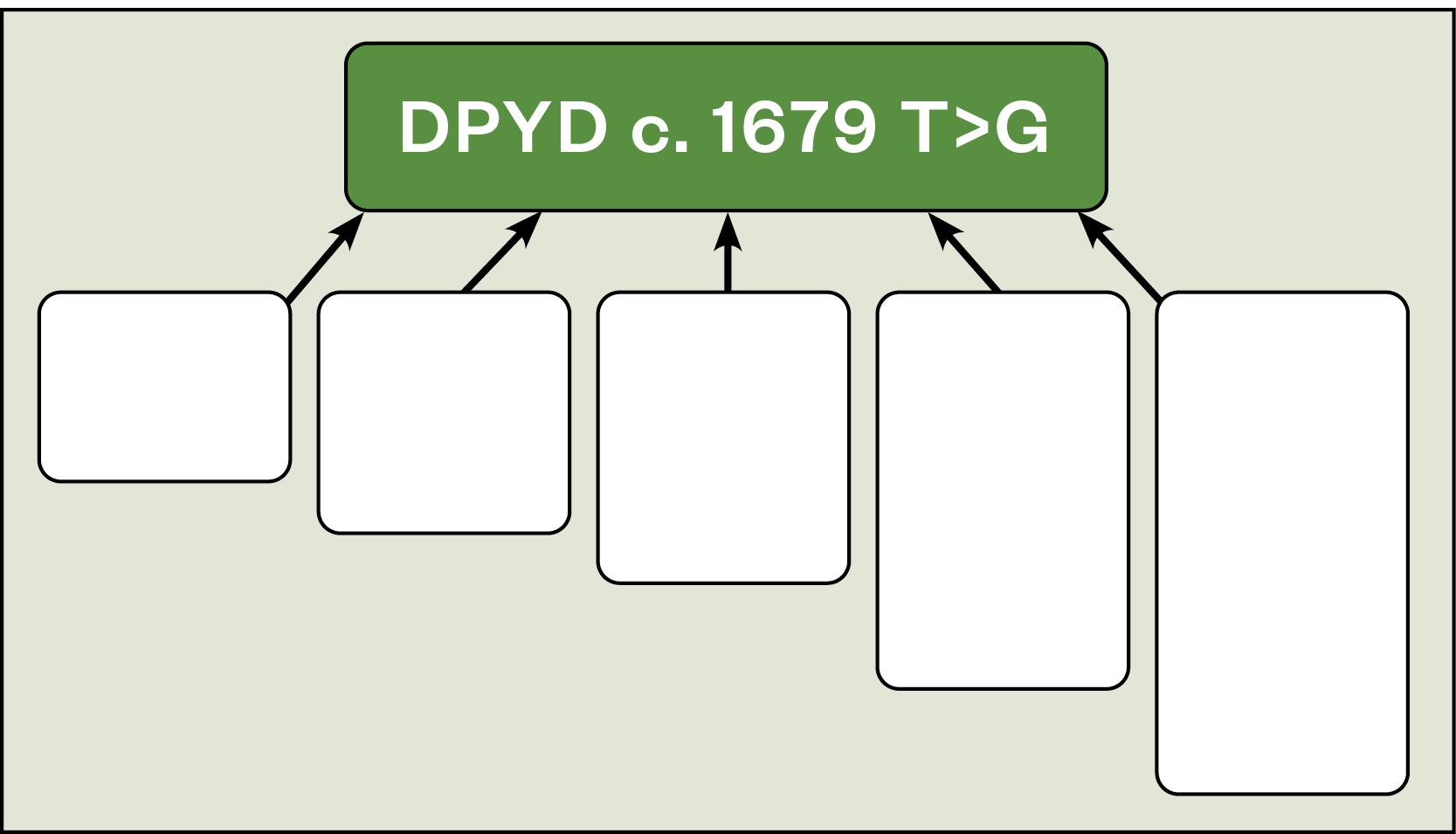
Quiz Summary
0 of 15 Questions completed
Questions:
Information
You have already completed the quiz before. Hence you can not start it again.
Quiz is loading...
You must sign in or sign up to start the quiz.
You must first complete the following:
Results
Results
0 of 15 Questions answered correctly
Your time:
Time has elapsed
You have reached 0 of 0 point(s), (0)
Earned Point(s): 0 of 0, (0)
0 Essay(s) Pending (Possible Point(s): 0)
Categories
- Not categorized 0%
- 1
- 2
- 3
- 4
- 5
- 6
- 7
- 8
- 9
- 10
- 11
- 12
- 13
- 14
- 15
- Current
- Review
- Answered
- Correct
- Incorrect
- Question 1 of 15
1. Question
Match the abnormal liver function test results with the most likely cause.
Sort elements
- Isolated rise in bilirubin, all other tests are within range
- Raised aspartate aminotransferase (AST) and alanine aminotransferase (ALT), with an AST:ALT ratio of 3:1 and raised gamma-glutamyl transferase
- Raised aspartate aminotransferase and alanine aminotransferase that is >18 x upper normal limit
- Raised gamma-glutamyl transferase, alkaline phosphatase and bilirubin
- Isolated rise in gamma-glutamyl transferase, all other tests are within range
- Gilbert’s syndrome
- Alcoholic hepatitis
- Paracetamol overdose
- Cholestasis
- Patient is taking phenytoin
CorrectIncorrect - Question 2 of 15
2. Question
Stevens-Johnson syndrome (pictured above) is a serious cutaneous reaction that can be caused by certain medicines. Please select the two anti-seizure medicines from this list that are most likely to cause this reaction.
CorrectIncorrect - Question 3 of 15
3. Question
What consequence of increased gluconeogenesis and glycogenolysis (see image above) results in the quartet of symptoms commonly known as the 'four Ts’ (toilet, thirsty, tired, thinner) that are common symptoms of diabetic ketoacidosis?
CorrectIncorrect - Question 4 of 15
4. Question
Numerical tools may be inappropriate at evaluating pain in certain patients, in which of the following patients should an alternative strategy be used? Select all answers that apply.
CorrectIncorrect - Question 5 of 15
5. Question
Fill in the blanks.
There are several patient groups who may be suitable for review to potentially switch inhaler devices. Individual patients should be prioritised for review rather than attempting a blanket inhaler switch policy; this includes those with poor , poor , poor , excessive short-acting beta-agonist use and those prescribed mixed types of inhaler devices.
CorrectIncorrect - Question 6 of 15
6. Question
Look at the three images of different scar types above and match them with the correct definition.
Sort elements
- Normotrophic scar
- Hypertrophic scar
- Keloid scar
- A
- B
- C
CorrectIncorrect - Question 7 of 15
7. Question
Fill in the blanks.
Heterozygous familial hypercholesterolaemia is an autosomal inherited condition where parent with an altered gene has a % chance of passing on that altered gene to each of their children.
CorrectIncorrect - Question 8 of 15
8. Question
Which two of the following statements about immune checkpoint inhibitor adverse event timescales are correct?
CorrectIncorrect - Question 9 of 15
9. Question
Which of the following options are most likely to cause pernicious anaemia and a resulting vitamin B12 deficiency via malabsorption? Select all answers that apply.
CorrectIncorrect - Question 10 of 15
10. Question
Gout is caused by the build-up of which metabolic by-product in the joints?
CorrectIncorrect - Question 11 of 15
11. Question
Hyperkalaemia can be caused by medicines that cause retention of potassium. Match the following medicines that can cause hyperkalaemia with their indications.
Sort elements
- Hypertension, heart failure, secondary prevention following myocardial infarction
- Hypertension, heart failure
- Ascites, heart failure
- Prevention and treatment of venous thromboembolism
- Angiotensin-converting enzyme inhibitors (e.g. ramipril)
- Angiotensin II receptor antagonists (e.g. candesartan)
- Aldosterone receptor antagonists (e.g. spironolactone, eplerenone)
- Low-molecular-weight heparins (e.g. enoxaparin)
CorrectIncorrect - Question 12 of 15
12. Question
What is the most commonly used advanced therapy medicinal product in the UK?
CorrectIncorrect - Question 13 of 15
13. Question
A DPYD variant is shown above. Order the following nomenclature labels that are missing from the figure directionally left to right.
- The 'reference' nucleotide — which is no longer present
- The gene symbol
- The coding region of the gene
- The nucleotide that has been substituted and is now present in the gene
- Nucleotide position within the gene
View:
CorrectIncorrect - Question 14 of 15
14. Question
The risk factors associated with premature ovarian insufficiency differ by ethnicity, true or false?
CorrectIncorrect - Question 15 of 15
15. Question
One approach to quality improvement allows solutions to be tested on a smaller scale, giving the opportunity to see whether the proposed change will succeed before a full implementation.
Put the steps of this approach in the correct order.
- Act
- Do
- Study
- Plan
View:
CorrectIncorrect
This question is from ‘DPYD genetic testing and the future of pharmacogenomic testing in routine care‘. Please refer to the original article if you would like to know more.
Women’s health
Premature ovarian insufficiency is a condition whereby the ovaries stop functioning before the age of 40 years. The severity and frequency of symptoms varies from person to person, but symptoms can include hot flushes, headaches, mood changes, irritability and lowered libido. Expand question 14 to test your knowledge.

Shutterstock.com
Quiz Summary
0 of 15 Questions completed
Questions:
Information
You have already completed the quiz before. Hence you can not start it again.
Quiz is loading...
You must sign in or sign up to start the quiz.
You must first complete the following:
Results
Results
0 of 15 Questions answered correctly
Your time:
Time has elapsed
You have reached 0 of 0 point(s), (0)
Earned Point(s): 0 of 0, (0)
0 Essay(s) Pending (Possible Point(s): 0)
Categories
- Not categorized 0%
- 1
- 2
- 3
- 4
- 5
- 6
- 7
- 8
- 9
- 10
- 11
- 12
- 13
- 14
- 15
- Current
- Review
- Answered
- Correct
- Incorrect
- Question 1 of 15
1. Question
Match the abnormal liver function test results with the most likely cause.
Sort elements
- Isolated rise in bilirubin, all other tests are within range
- Raised aspartate aminotransferase (AST) and alanine aminotransferase (ALT), with an AST:ALT ratio of 3:1 and raised gamma-glutamyl transferase
- Raised aspartate aminotransferase and alanine aminotransferase that is >18 x upper normal limit
- Raised gamma-glutamyl transferase, alkaline phosphatase and bilirubin
- Isolated rise in gamma-glutamyl transferase, all other tests are within range
- Gilbert’s syndrome
- Alcoholic hepatitis
- Paracetamol overdose
- Cholestasis
- Patient is taking phenytoin
CorrectIncorrect - Question 2 of 15
2. Question
Stevens-Johnson syndrome (pictured above) is a serious cutaneous reaction that can be caused by certain medicines. Please select the two anti-seizure medicines from this list that are most likely to cause this reaction.
CorrectIncorrect - Question 3 of 15
3. Question
What consequence of increased gluconeogenesis and glycogenolysis (see image above) results in the quartet of symptoms commonly known as the 'four Ts’ (toilet, thirsty, tired, thinner) that are common symptoms of diabetic ketoacidosis?
CorrectIncorrect - Question 4 of 15
4. Question
Numerical tools may be inappropriate at evaluating pain in certain patients, in which of the following patients should an alternative strategy be used? Select all answers that apply.
CorrectIncorrect - Question 5 of 15
5. Question
Fill in the blanks.
There are several patient groups who may be suitable for review to potentially switch inhaler devices. Individual patients should be prioritised for review rather than attempting a blanket inhaler switch policy; this includes those with poor , poor , poor , excessive short-acting beta-agonist use and those prescribed mixed types of inhaler devices.
CorrectIncorrect - Question 6 of 15
6. Question
Look at the three images of different scar types above and match them with the correct definition.
Sort elements
- Normotrophic scar
- Hypertrophic scar
- Keloid scar
- A
- B
- C
CorrectIncorrect - Question 7 of 15
7. Question
Fill in the blanks.
Heterozygous familial hypercholesterolaemia is an autosomal inherited condition where parent with an altered gene has a % chance of passing on that altered gene to each of their children.
CorrectIncorrect - Question 8 of 15
8. Question
Which two of the following statements about immune checkpoint inhibitor adverse event timescales are correct?
CorrectIncorrect - Question 9 of 15
9. Question
Which of the following options are most likely to cause pernicious anaemia and a resulting vitamin B12 deficiency via malabsorption? Select all answers that apply.
CorrectIncorrect - Question 10 of 15
10. Question
Gout is caused by the build-up of which metabolic by-product in the joints?
CorrectIncorrect - Question 11 of 15
11. Question
Hyperkalaemia can be caused by medicines that cause retention of potassium. Match the following medicines that can cause hyperkalaemia with their indications.
Sort elements
- Hypertension, heart failure, secondary prevention following myocardial infarction
- Hypertension, heart failure
- Ascites, heart failure
- Prevention and treatment of venous thromboembolism
- Angiotensin-converting enzyme inhibitors (e.g. ramipril)
- Angiotensin II receptor antagonists (e.g. candesartan)
- Aldosterone receptor antagonists (e.g. spironolactone, eplerenone)
- Low-molecular-weight heparins (e.g. enoxaparin)
CorrectIncorrect - Question 12 of 15
12. Question
What is the most commonly used advanced therapy medicinal product in the UK?
CorrectIncorrect - Question 13 of 15
13. Question
A DPYD variant is shown above. Order the following nomenclature labels that are missing from the figure directionally left to right.
- Nucleotide position within the gene
- The coding region of the gene
- The gene symbol
- The nucleotide that has been substituted and is now present in the gene
- The 'reference' nucleotide — which is no longer present
View:
CorrectIncorrect - Question 14 of 15
14. Question
The risk factors associated with premature ovarian insufficiency differ by ethnicity, true or false?
CorrectIncorrect - Question 15 of 15
15. Question
One approach to quality improvement allows solutions to be tested on a smaller scale, giving the opportunity to see whether the proposed change will succeed before a full implementation.
Put the steps of this approach in the correct order.
- Study
- Act
- Do
- Plan
View:
CorrectIncorrect
This question is from ‘Premature ovarian insufficiency: diagnosis and management‘. Please refer to the original article if you would like to know more.
Quality improvement
Quality improvement (QI) requires a coordinated approach to solving a problem, and the people involved need to be equipped with the necessary skills and resources. A range of QI tools, methods and approaches have been developed over time. Expand question 15 to test your knowledge.

Shutterstock.com
Quiz Summary
0 of 15 Questions completed
Questions:
Information
You have already completed the quiz before. Hence you can not start it again.
Quiz is loading...
You must sign in or sign up to start the quiz.
You must first complete the following:
Results
Results
0 of 15 Questions answered correctly
Your time:
Time has elapsed
You have reached 0 of 0 point(s), (0)
Earned Point(s): 0 of 0, (0)
0 Essay(s) Pending (Possible Point(s): 0)
Categories
- Not categorized 0%
- 1
- 2
- 3
- 4
- 5
- 6
- 7
- 8
- 9
- 10
- 11
- 12
- 13
- 14
- 15
- Current
- Review
- Answered
- Correct
- Incorrect
- Question 1 of 15
1. Question
Match the abnormal liver function test results with the most likely cause.
Sort elements
- Isolated rise in bilirubin, all other tests are within range
- Raised aspartate aminotransferase (AST) and alanine aminotransferase (ALT), with an AST:ALT ratio of 3:1 and raised gamma-glutamyl transferase
- Raised aspartate aminotransferase and alanine aminotransferase that is >18 x upper normal limit
- Raised gamma-glutamyl transferase, alkaline phosphatase and bilirubin
- Isolated rise in gamma-glutamyl transferase, all other tests are within range
- Gilbert’s syndrome
- Alcoholic hepatitis
- Paracetamol overdose
- Cholestasis
- Patient is taking phenytoin
CorrectIncorrect - Question 2 of 15
2. Question
Stevens-Johnson syndrome (pictured above) is a serious cutaneous reaction that can be caused by certain medicines. Please select the two anti-seizure medicines from this list that are most likely to cause this reaction.
CorrectIncorrect - Question 3 of 15
3. Question
What consequence of increased gluconeogenesis and glycogenolysis (see image above) results in the quartet of symptoms commonly known as the 'four Ts’ (toilet, thirsty, tired, thinner) that are common symptoms of diabetic ketoacidosis?
CorrectIncorrect - Question 4 of 15
4. Question
Numerical tools may be inappropriate at evaluating pain in certain patients, in which of the following patients should an alternative strategy be used? Select all answers that apply.
CorrectIncorrect - Question 5 of 15
5. Question
Fill in the blanks.
There are several patient groups who may be suitable for review to potentially switch inhaler devices. Individual patients should be prioritised for review rather than attempting a blanket inhaler switch policy; this includes those with poor , poor , poor , excessive short-acting beta-agonist use and those prescribed mixed types of inhaler devices.
CorrectIncorrect - Question 6 of 15
6. Question
Look at the three images of different scar types above and match them with the correct definition.
Sort elements
- Normotrophic scar
- Hypertrophic scar
- Keloid scar
- A
- B
- C
CorrectIncorrect - Question 7 of 15
7. Question
Fill in the blanks.
Heterozygous familial hypercholesterolaemia is an autosomal inherited condition where parent with an altered gene has a % chance of passing on that altered gene to each of their children.
CorrectIncorrect - Question 8 of 15
8. Question
Which two of the following statements about immune checkpoint inhibitor adverse event timescales are correct?
CorrectIncorrect - Question 9 of 15
9. Question
Which of the following options are most likely to cause pernicious anaemia and a resulting vitamin B12 deficiency via malabsorption? Select all answers that apply.
CorrectIncorrect - Question 10 of 15
10. Question
Gout is caused by the build-up of which metabolic by-product in the joints?
CorrectIncorrect - Question 11 of 15
11. Question
Hyperkalaemia can be caused by medicines that cause retention of potassium. Match the following medicines that can cause hyperkalaemia with their indications.
Sort elements
- Hypertension, heart failure, secondary prevention following myocardial infarction
- Hypertension, heart failure
- Ascites, heart failure
- Prevention and treatment of venous thromboembolism
- Angiotensin-converting enzyme inhibitors (e.g. ramipril)
- Angiotensin II receptor antagonists (e.g. candesartan)
- Aldosterone receptor antagonists (e.g. spironolactone, eplerenone)
- Low-molecular-weight heparins (e.g. enoxaparin)
CorrectIncorrect - Question 12 of 15
12. Question
What is the most commonly used advanced therapy medicinal product in the UK?
CorrectIncorrect - Question 13 of 15
13. Question
A DPYD variant is shown above. Order the following nomenclature labels that are missing from the figure directionally left to right.
- The 'reference' nucleotide — which is no longer present
- The gene symbol
- The coding region of the gene
- The nucleotide that has been substituted and is now present in the gene
- Nucleotide position within the gene
View:
CorrectIncorrect - Question 14 of 15
14. Question
The risk factors associated with premature ovarian insufficiency differ by ethnicity, true or false?
CorrectIncorrect - Question 15 of 15
15. Question
One approach to quality improvement allows solutions to be tested on a smaller scale, giving the opportunity to see whether the proposed change will succeed before a full implementation.
Put the steps of this approach in the correct order.
- Plan
- Study
- Act
- Do
View:
CorrectIncorrect
This question is from ‘Quality improvement in pharmacy practice‘. Please refer to the original article if you would like to know more.
Quiz Summary
0 of 15 Questions completed
Questions:
Information
You have already completed the quiz before. Hence you can not start it again.
Quiz is loading...
You must sign in or sign up to start the quiz.
You must first complete the following:
Results
Results
0 of 15 Questions answered correctly
Your time:
Time has elapsed
You have reached 0 of 0 point(s), (0)
Earned Point(s): 0 of 0, (0)
0 Essay(s) Pending (Possible Point(s): 0)
Categories
- Not categorized 0%
- 1
- 2
- 3
- 4
- 5
- 6
- 7
- 8
- 9
- 10
- 11
- 12
- 13
- 14
- 15
- Current
- Review
- Answered
- Correct
- Incorrect
- Question 1 of 15
1. Question
Match the abnormal liver function test results with the most likely cause.
Sort elements
- Isolated rise in bilirubin, all other tests are within range
- Raised aspartate aminotransferase (AST) and alanine aminotransferase (ALT), with an AST:ALT ratio of 3:1 and raised gamma-glutamyl transferase
- Raised aspartate aminotransferase and alanine aminotransferase that is >18 x upper normal limit
- Raised gamma-glutamyl transferase, alkaline phosphatase and bilirubin
- Isolated rise in gamma-glutamyl transferase, all other tests are within range
- Gilbert’s syndrome
- Alcoholic hepatitis
- Paracetamol overdose
- Cholestasis
- Patient is taking phenytoin
CorrectIncorrect - Question 2 of 15
2. Question
Stevens-Johnson syndrome (pictured above) is a serious cutaneous reaction that can be caused by certain medicines. Please select the two anti-seizure medicines from this list that are most likely to cause this reaction.
CorrectIncorrect - Question 3 of 15
3. Question
What consequence of increased gluconeogenesis and glycogenolysis (see image above) results in the quartet of symptoms commonly known as the 'four Ts’ (toilet, thirsty, tired, thinner) that are common symptoms of diabetic ketoacidosis?
CorrectIncorrect - Question 4 of 15
4. Question
Numerical tools may be inappropriate at evaluating pain in certain patients, in which of the following patients should an alternative strategy be used? Select all answers that apply.
CorrectIncorrect - Question 5 of 15
5. Question
Fill in the blanks.
There are several patient groups who may be suitable for review to potentially switch inhaler devices. Individual patients should be prioritised for review rather than attempting a blanket inhaler switch policy; this includes those with poor , poor , poor , excessive short-acting beta-agonist use and those prescribed mixed types of inhaler devices.
CorrectIncorrect - Question 6 of 15
6. Question
Look at the three images of different scar types above and match them with the correct definition.
Sort elements
- Normotrophic scar
- Hypertrophic scar
- Keloid scar
- A
- B
- C
CorrectIncorrect - Question 7 of 15
7. Question
Fill in the blanks.
Heterozygous familial hypercholesterolaemia is an autosomal inherited condition where parent with an altered gene has a % chance of passing on that altered gene to each of their children.
CorrectIncorrect - Question 8 of 15
8. Question
Which two of the following statements about immune checkpoint inhibitor adverse event timescales are correct?
CorrectIncorrect - Question 9 of 15
9. Question
Which of the following options are most likely to cause pernicious anaemia and a resulting vitamin B12 deficiency via malabsorption? Select all answers that apply.
CorrectIncorrect - Question 10 of 15
10. Question
Gout is caused by the build-up of which metabolic by-product in the joints?
CorrectIncorrect - Question 11 of 15
11. Question
Hyperkalaemia can be caused by medicines that cause retention of potassium. Match the following medicines that can cause hyperkalaemia with their indications.
Sort elements
- Hypertension, heart failure, secondary prevention following myocardial infarction
- Hypertension, heart failure
- Ascites, heart failure
- Prevention and treatment of venous thromboembolism
- Angiotensin-converting enzyme inhibitors (e.g. ramipril)
- Angiotensin II receptor antagonists (e.g. candesartan)
- Aldosterone receptor antagonists (e.g. spironolactone, eplerenone)
- Low-molecular-weight heparins (e.g. enoxaparin)
CorrectIncorrect - Question 12 of 15
12. Question
What is the most commonly used advanced therapy medicinal product in the UK?
CorrectIncorrect - Question 13 of 15
13. Question
A DPYD variant is shown above. Order the following nomenclature labels that are missing from the figure directionally left to right.
- Nucleotide position within the gene
- The nucleotide that has been substituted and is now present in the gene
- The gene symbol
- The 'reference' nucleotide — which is no longer present
- The coding region of the gene
View:
CorrectIncorrect - Question 14 of 15
14. Question
The risk factors associated with premature ovarian insufficiency differ by ethnicity, true or false?
CorrectIncorrect - Question 15 of 15
15. Question
One approach to quality improvement allows solutions to be tested on a smaller scale, giving the opportunity to see whether the proposed change will succeed before a full implementation.
Put the steps of this approach in the correct order.
- Study
- Plan
- Do
- Act
View:
CorrectIncorrect
- Citation
- The Pharmaceutical Journal, PJ, December 2022, Vol 309, No 7968;309(7968)::DOI:10.1211/PJ.2022.1.167176
You might also be interested in…

Test yourself: the 2025 CPD and learning quiz

Test yourself: the 2024 CPD and learning quiz
